 |
||
|
HOME
|
US Navy -
ships
|
US Navy - air
units
|
USMC - air
units
|
International
Navies
|
Weapon Systems
|
Special Reports |
||
|
US Navy - Guided Missile Destroyer DDG 95 - USS James E. Williams |
||
|
||
| 07/24 | ||
|
Type, class:
Guided Missile Destroyer - DDG; Arleigh Burke class, Flight IIA Builder: Ingalls Shipbuilding, Pascagoula, Mississippi, USA STATUS: Awarded: March 6, 1998 Laid down: July 15, 2002 Launched: June 25, 2003 Commissioned: December 11, 2004 IN SERVICE Homeport: Naval Station Norfolk, Virginia Namesake: Boatswain’s Mate 1st Class James Elliot Williams (1930-1999) Ships Motto: LEAD FROM THE FRONT Technical Data: see: INFO > Arleigh Burke class Guided Missile Destroyer - DDG |
||
| images | ||
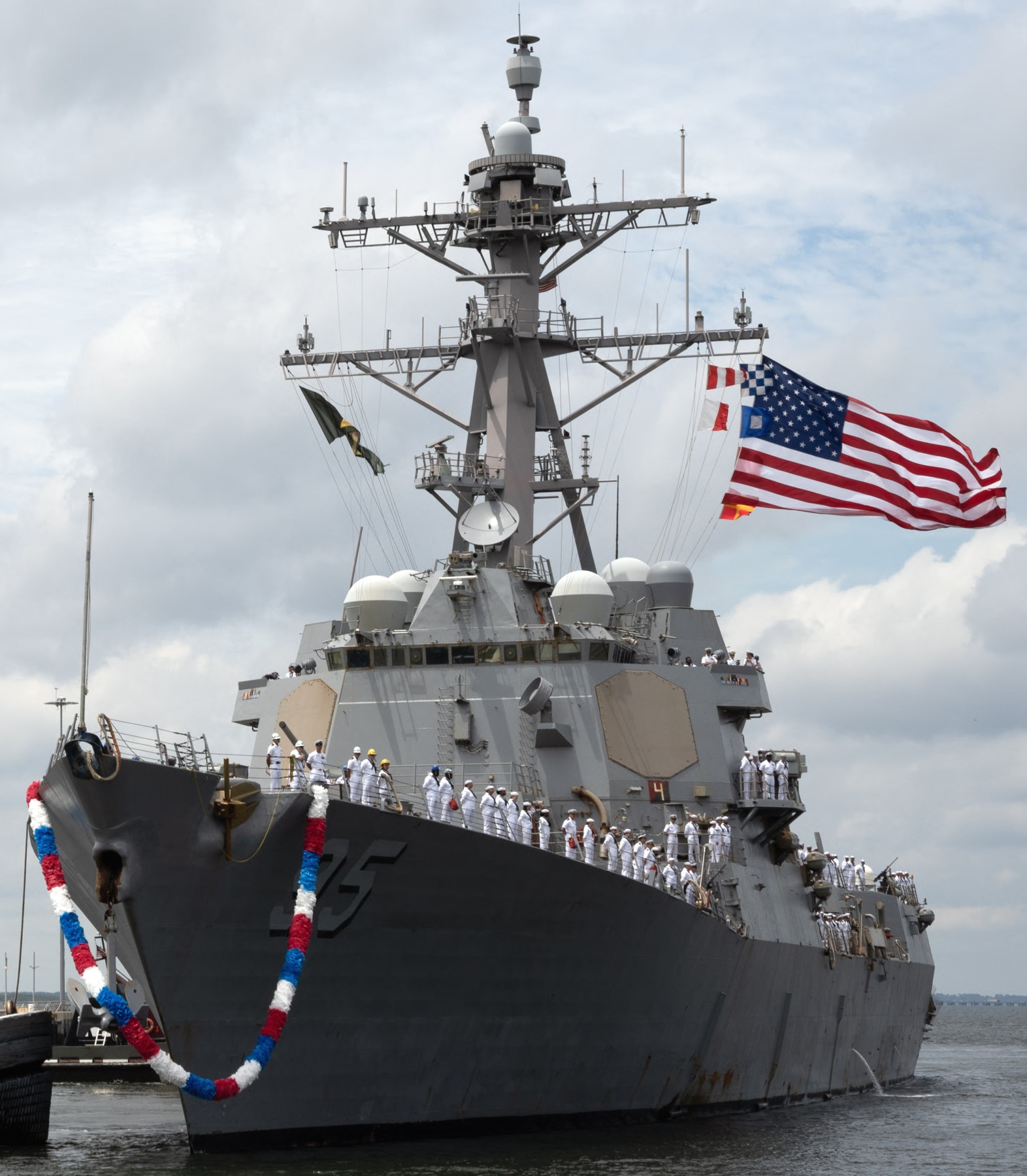 returning to Naval Station Norfolk, Virginia - July 14, 2023  Alicante, Spain - June 2023  Naval Support Activity Souda Bay, Crete, Greece - January 2023  Naval Support Activity Souda Bay, Crete, Greece - January 2023  Naval Support Activity Souda Bay, Crete, Greece - January 2023 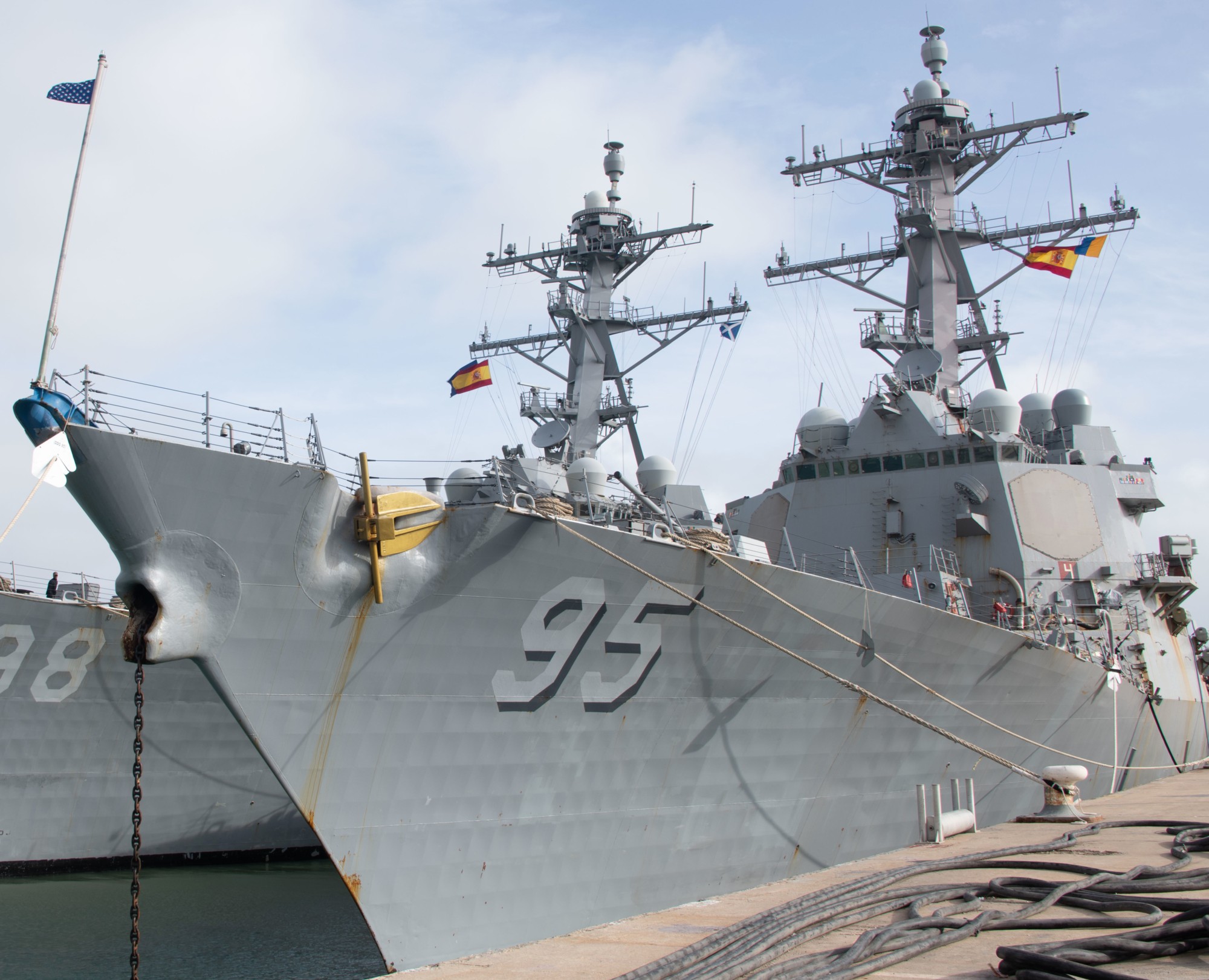 Naval Station Rota, Spain - December 2022  Naval Station Rota, Spain - December 2022 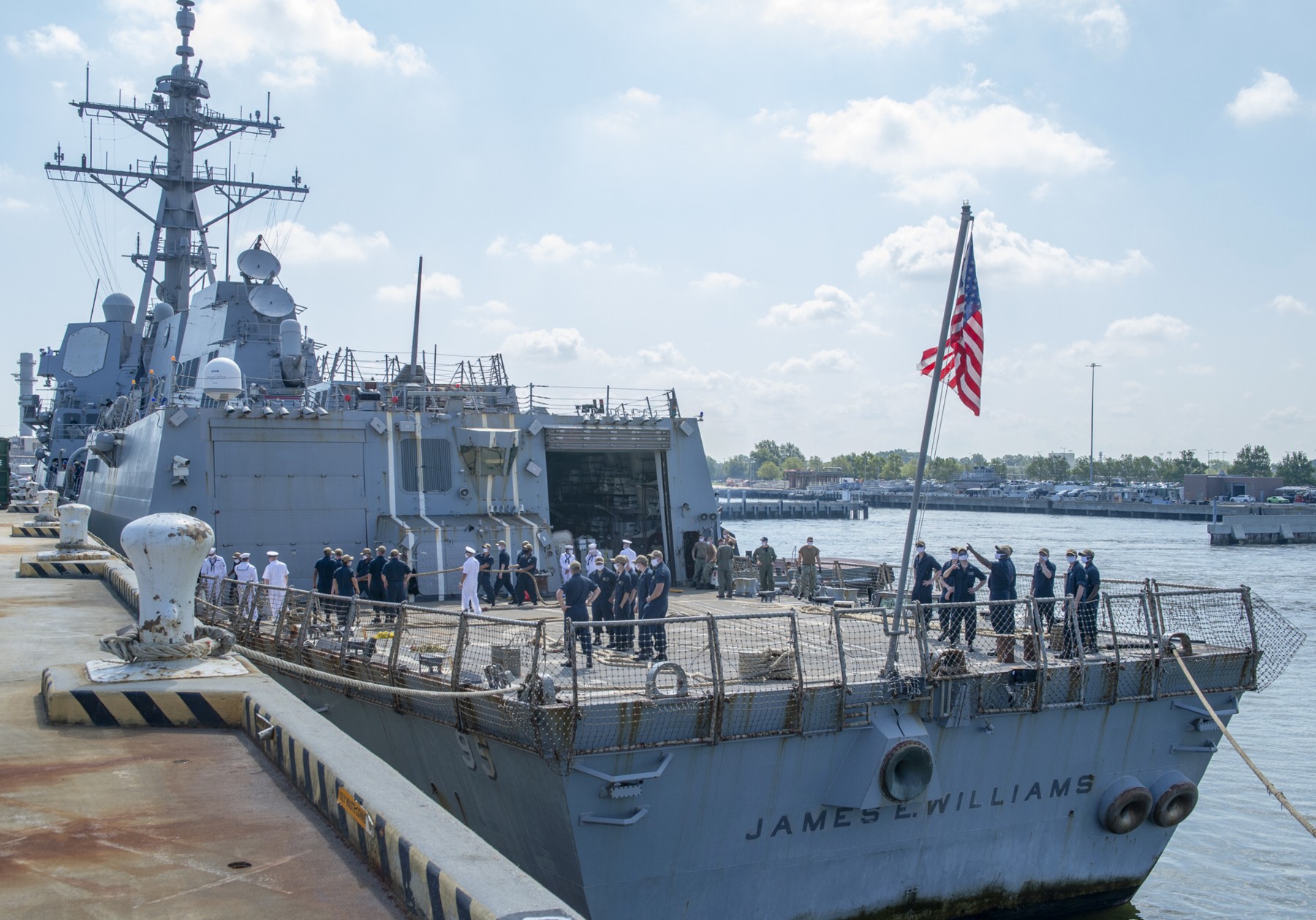 returning to Naval Station Norfolk, Virginia - August 10, 2020  returning to Naval Station Norfolk, Virginia - August 10, 2020  returning to Naval Station Norfolk, Virginia - August 10, 2020  Arabian Sea - May 2020  Arabian Sea - May 2020  helicopter stowage - Mediterranean Sea - March 2020  Mediterranean Sea - March 2020 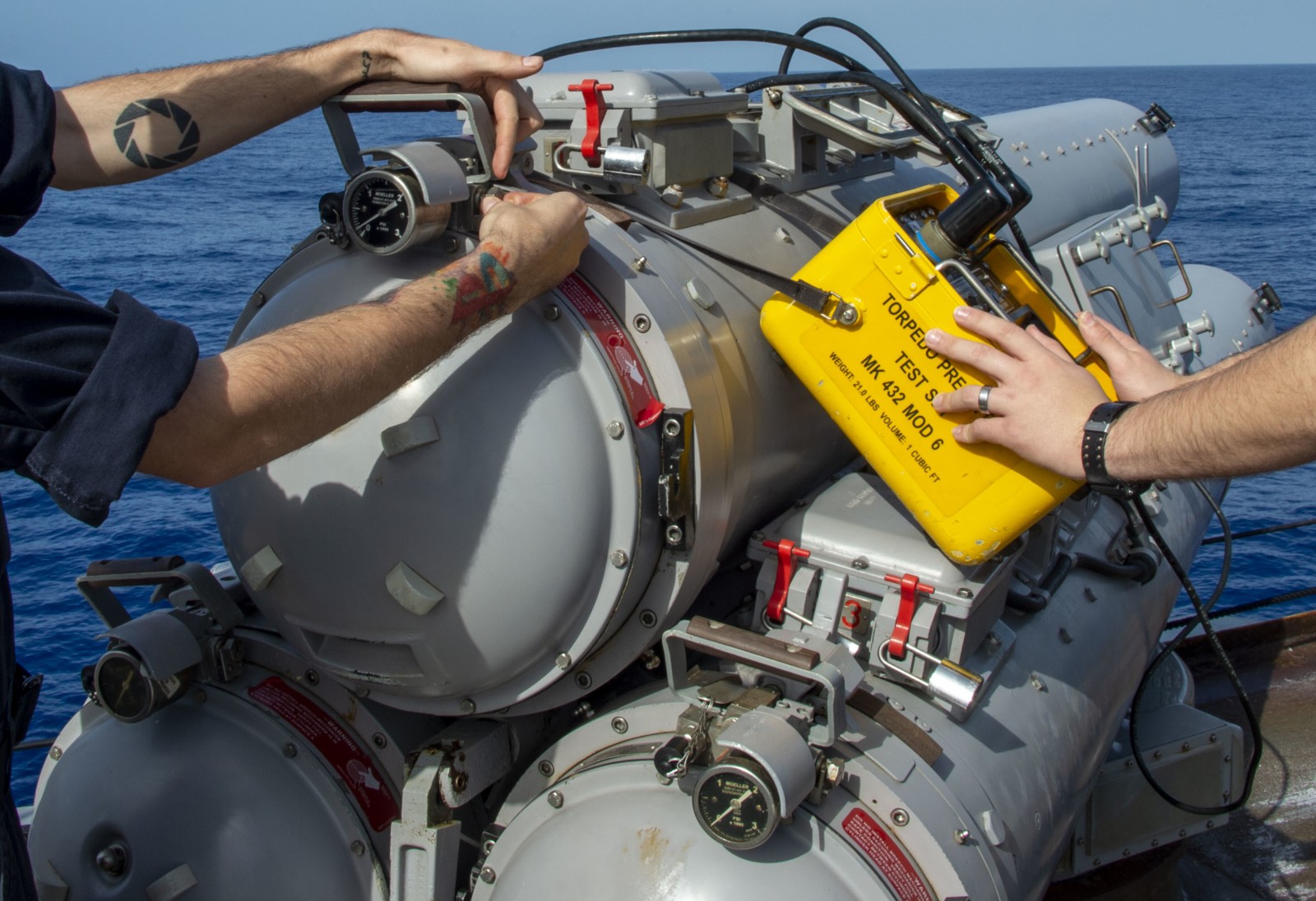 Mk.32 torpedo tube exercise - Atlantic Ocean - February 2020 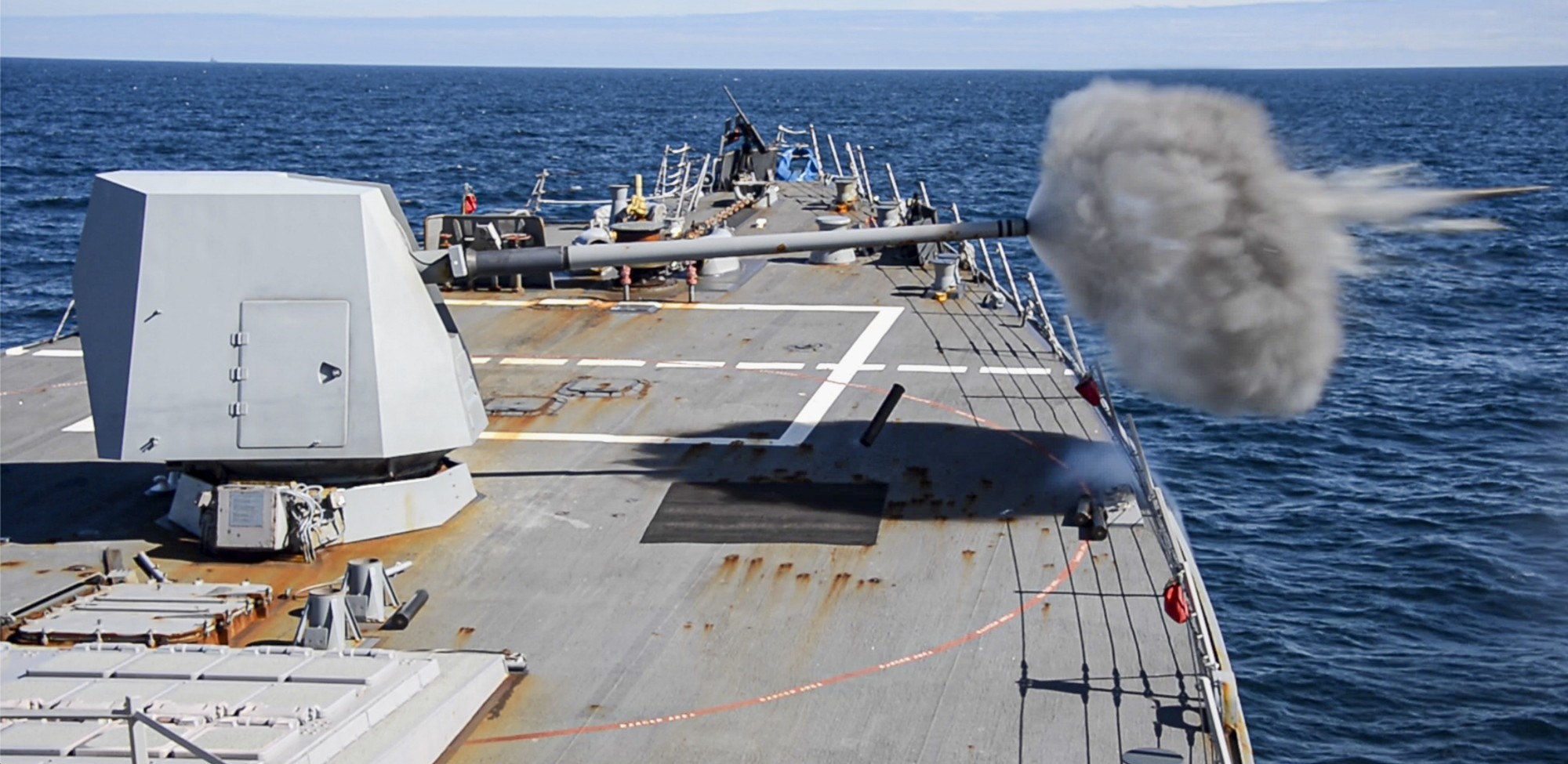 Mk.45 Mod.4 gun fire - Atlantic Ocean - February 2020 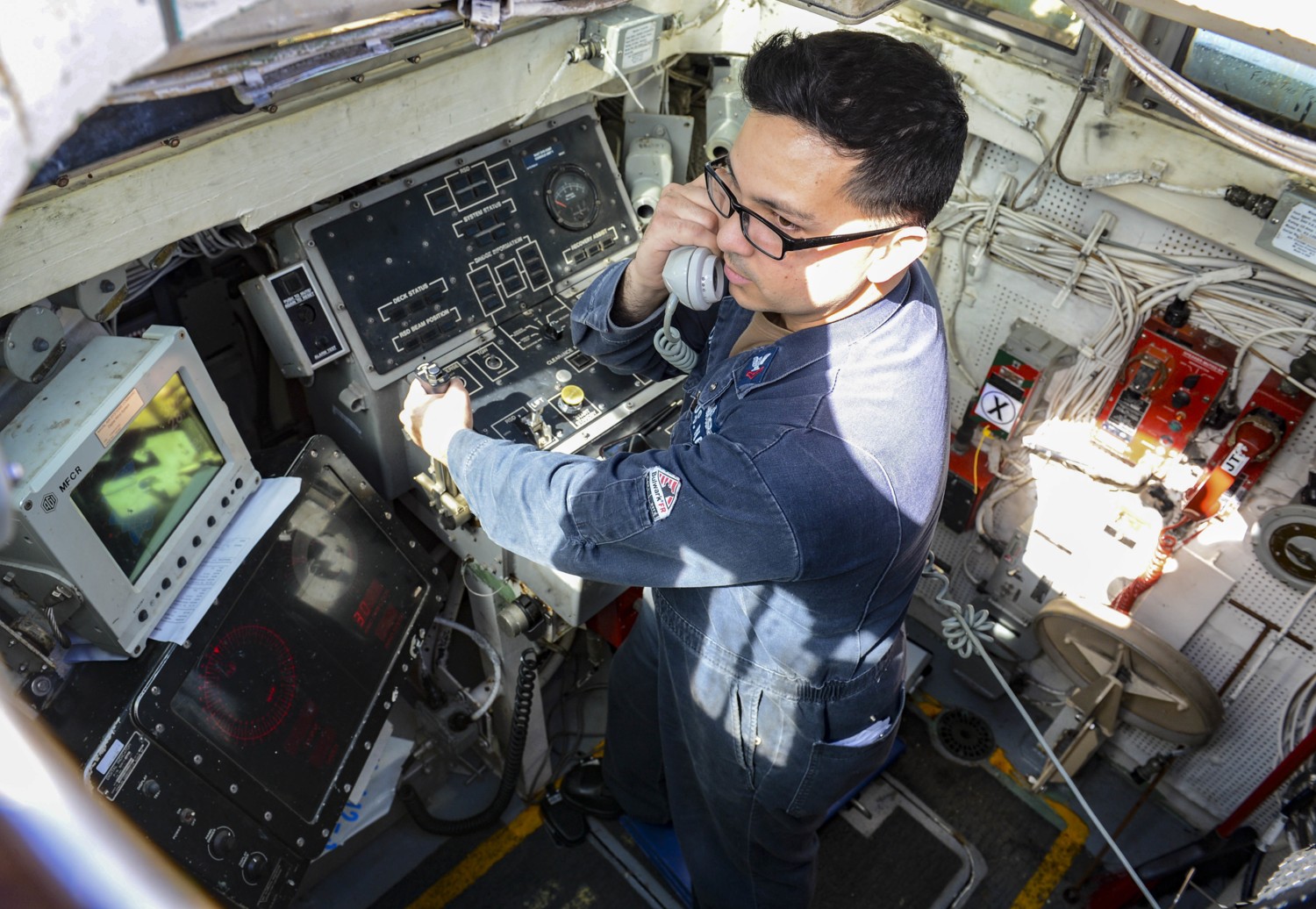 helicopter Recovery Assist, Secure and Traverse (RAST) system control console - Atlantic Ocean - February 2020 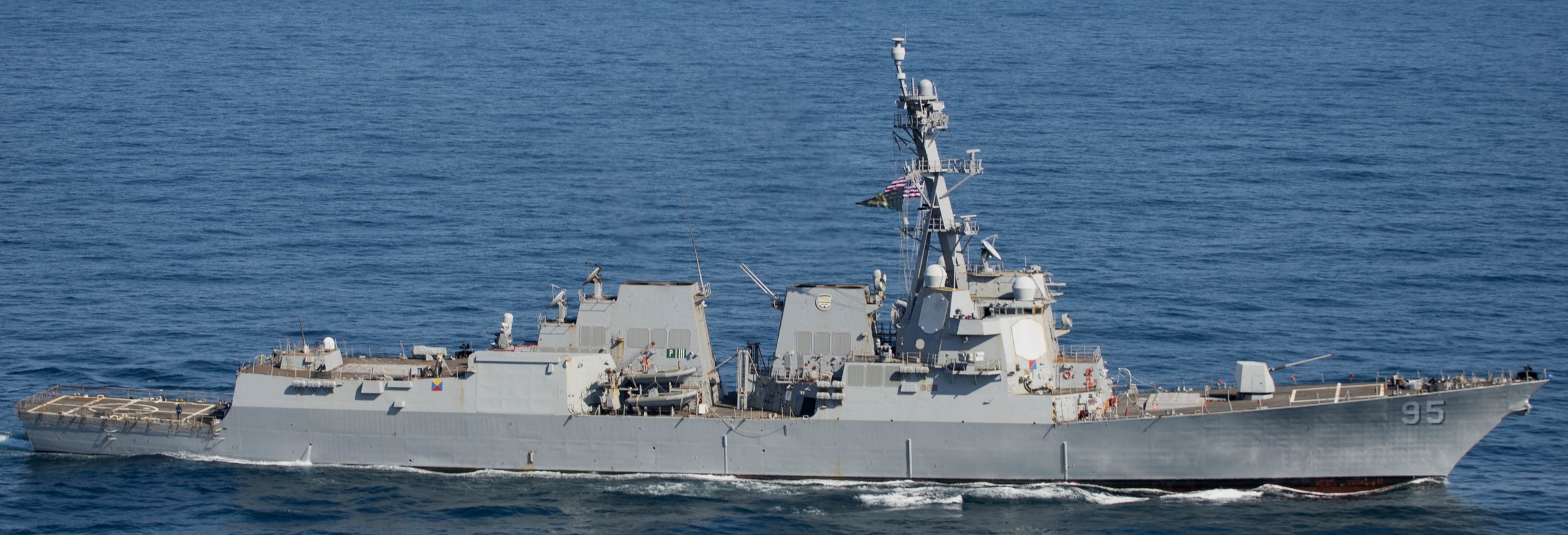 Atlantic Ocean - September 2019  Atlantic Ocean - September 2019  Atlantic Ocean - September 2019  departing Naval Station Norfolk, Virginia - September 4, 2019  Mobile Navy Week, Alabama - March 2019 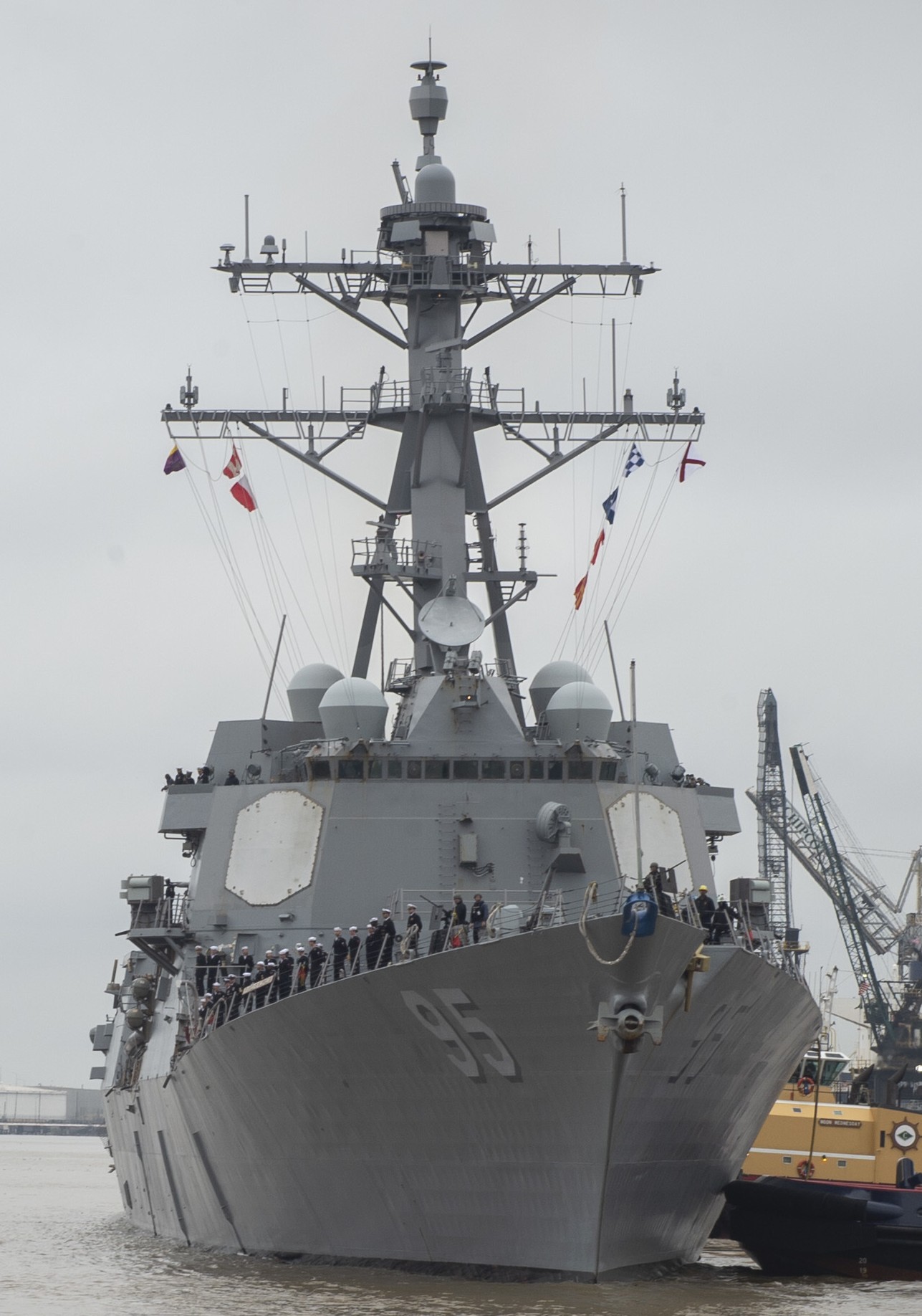 Mobile Navy Week, Alabama - March 2019  Atlantic Ocean - February 2019  departing Naval Station Norfolk, Virginia in preparation of hurricane Florence - September 10, 2018 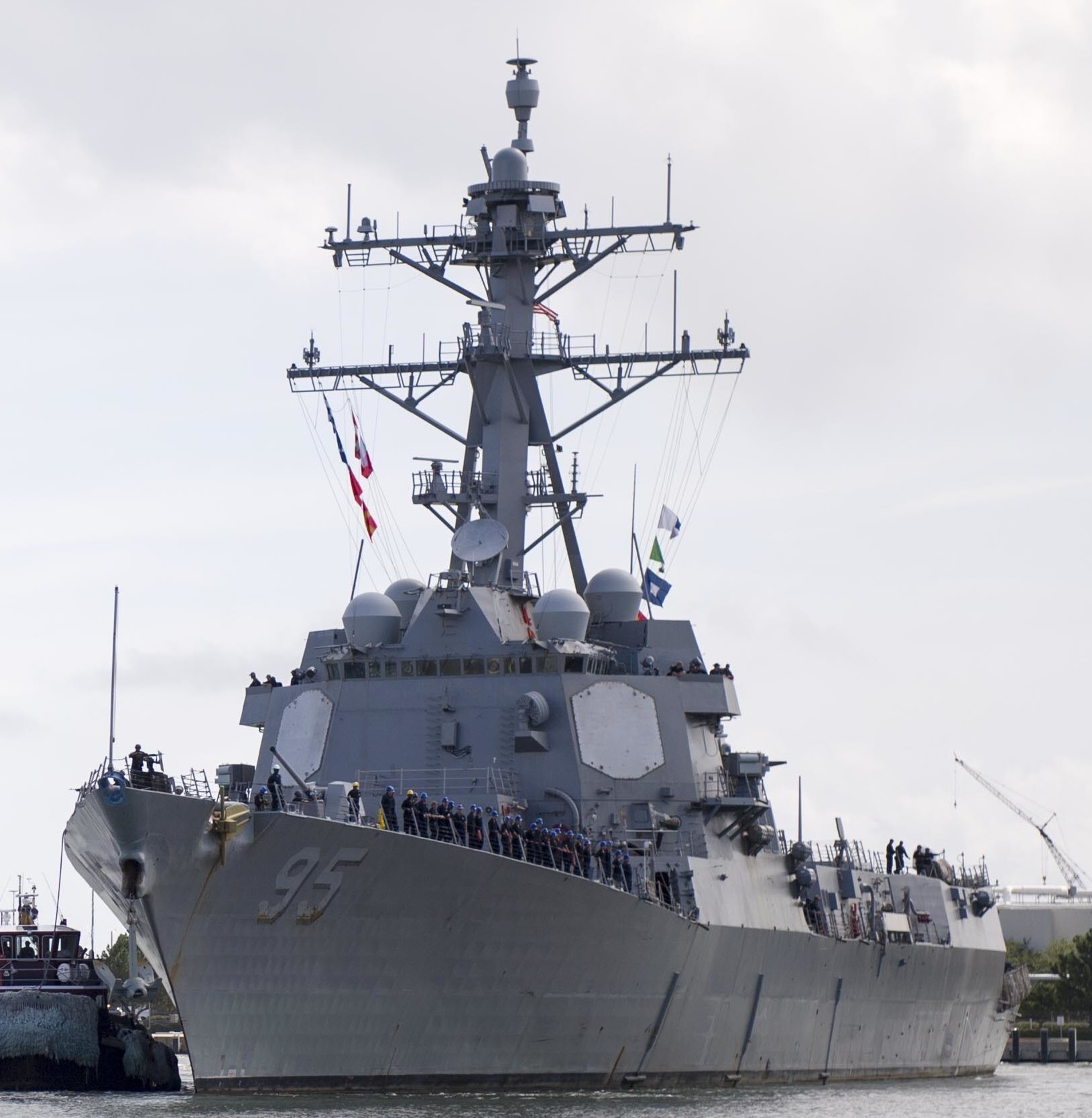 departing Naval Station Norfolk, Virginia in preparation of hurricane Florence - September 10, 2018  returning to Naval Station Norfolk, Virginia - December 23, 2017 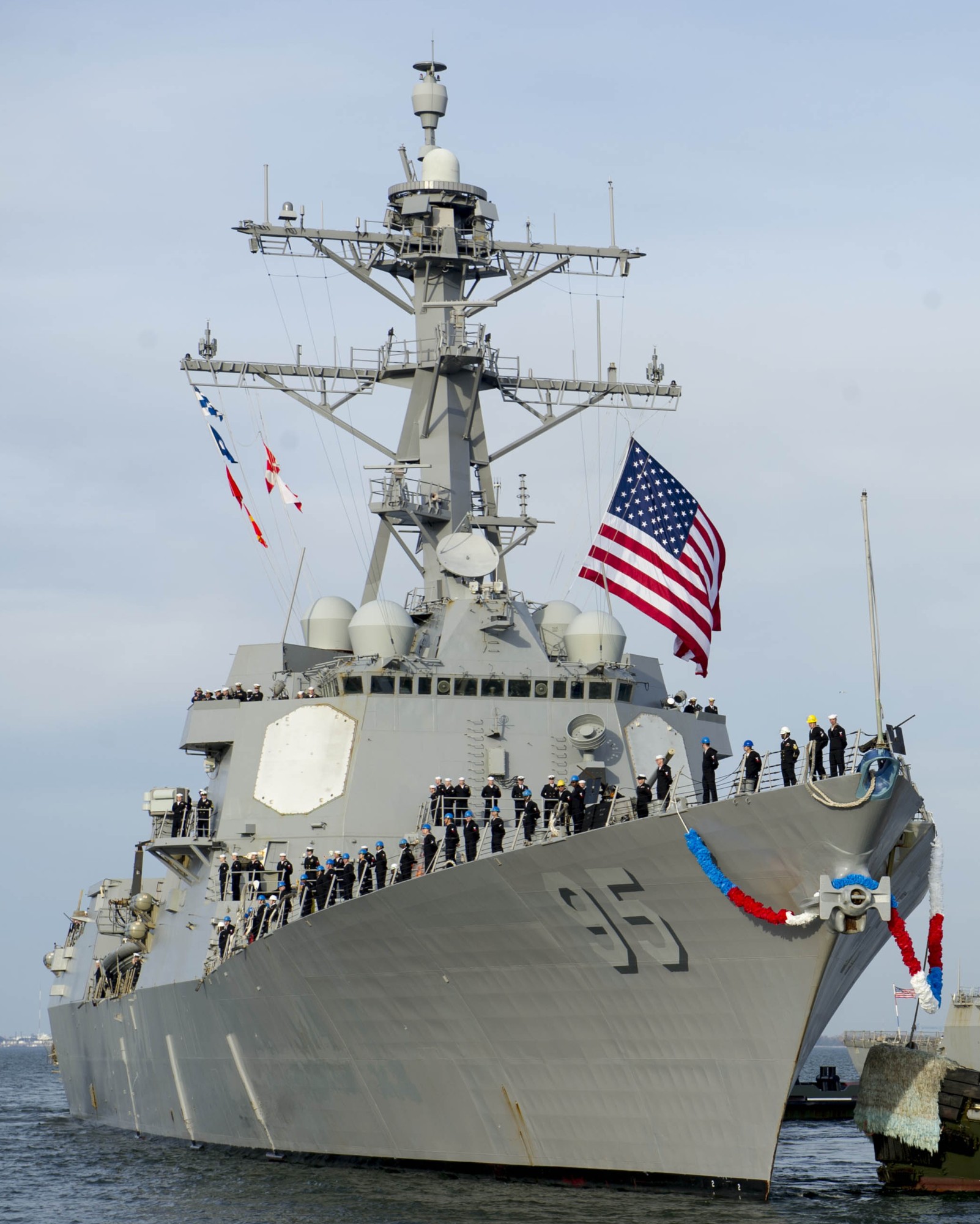 returning to Naval Station Norfolk, Virginia - December 23, 2017 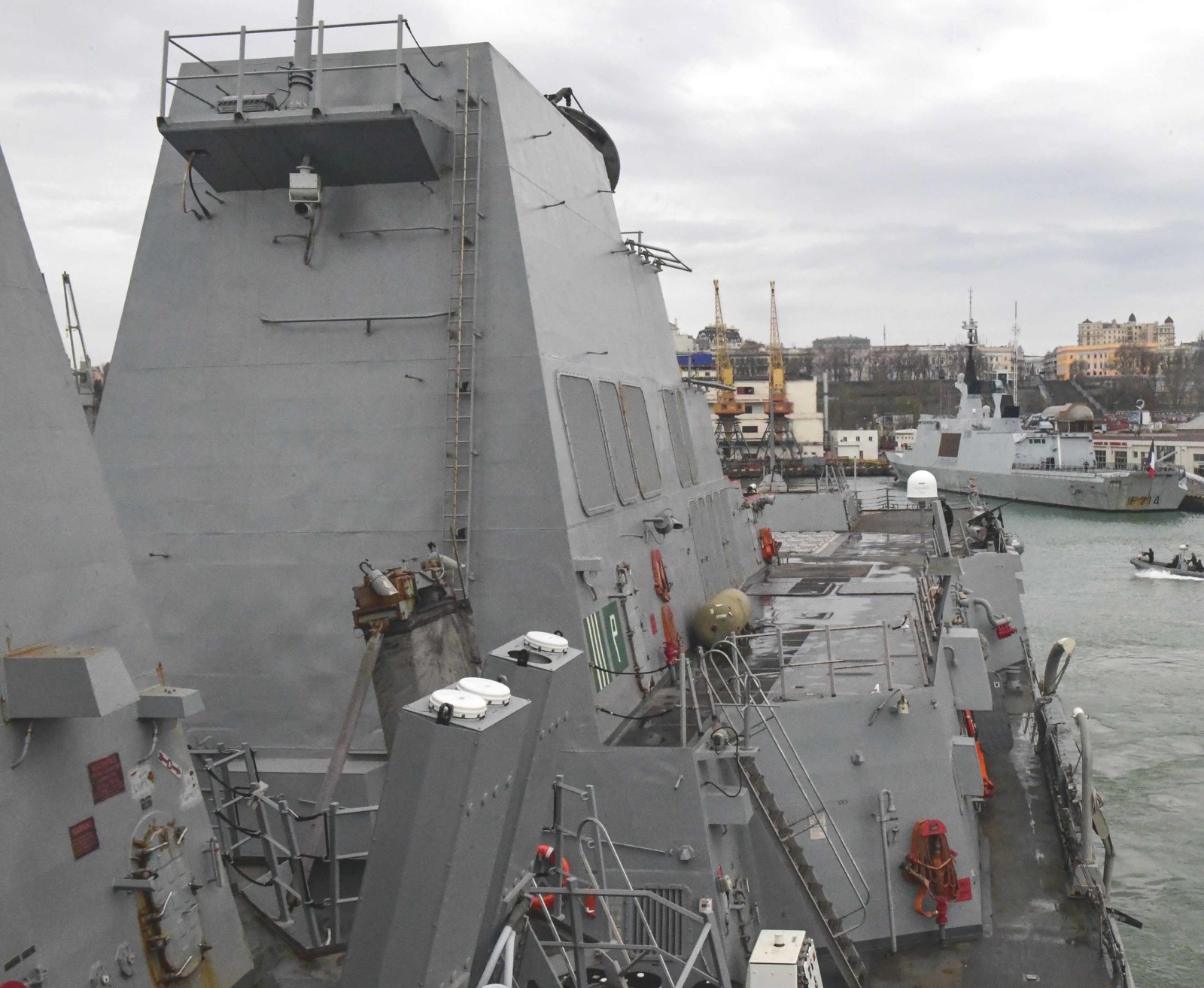 Odesa, Ukraine - December 2017 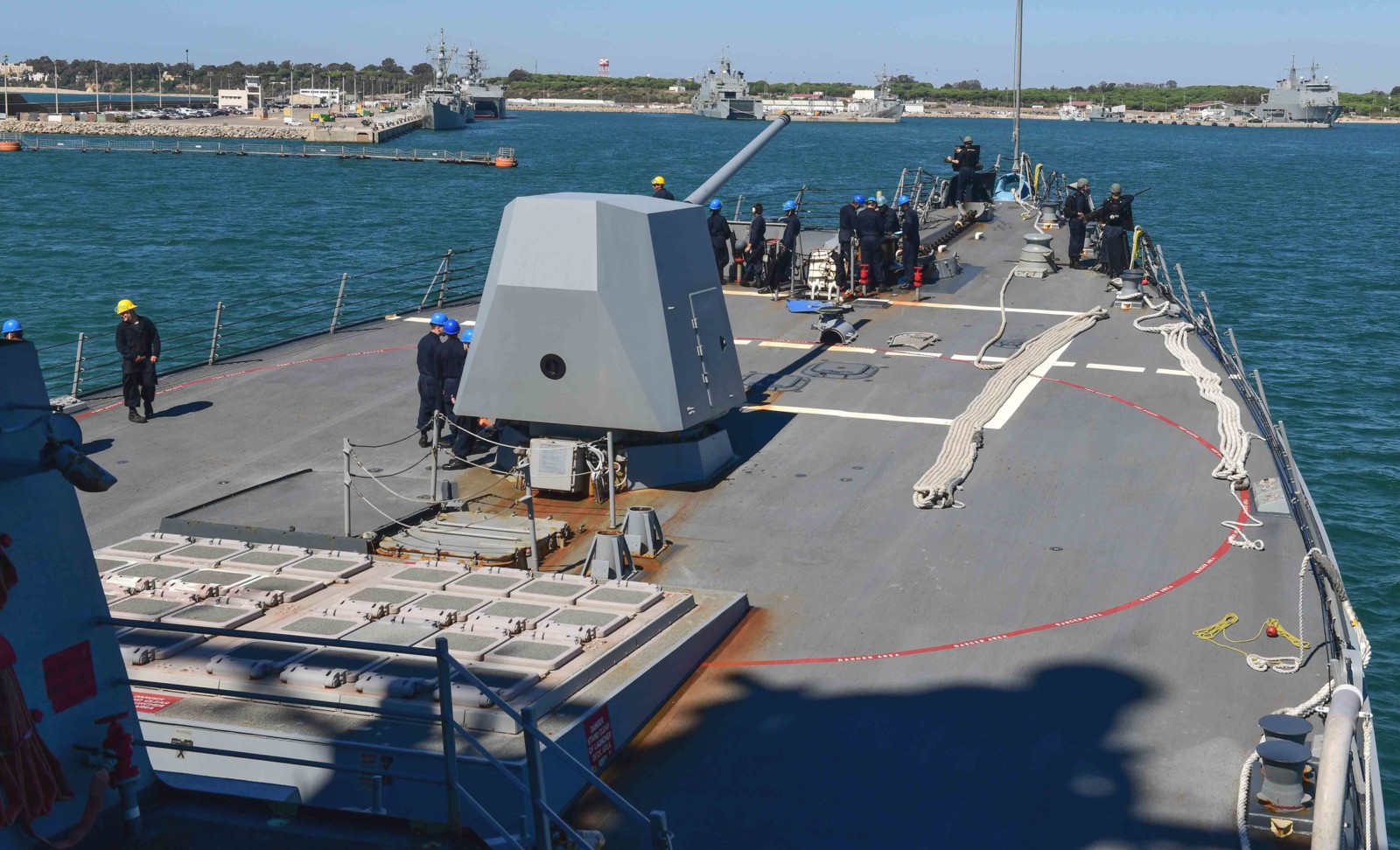 Naval Station Rota, Spain - October 2017  Arctic Circle - September 2017  Riga, Latvia - August 2017  Haakonsvern, Norway - August 2017  Atlantic Ocean - July 2017  Naval Station Rota, Spain - July 2017  Reykjavik, Iceland - June 2017  Baltic Sea - June 2017 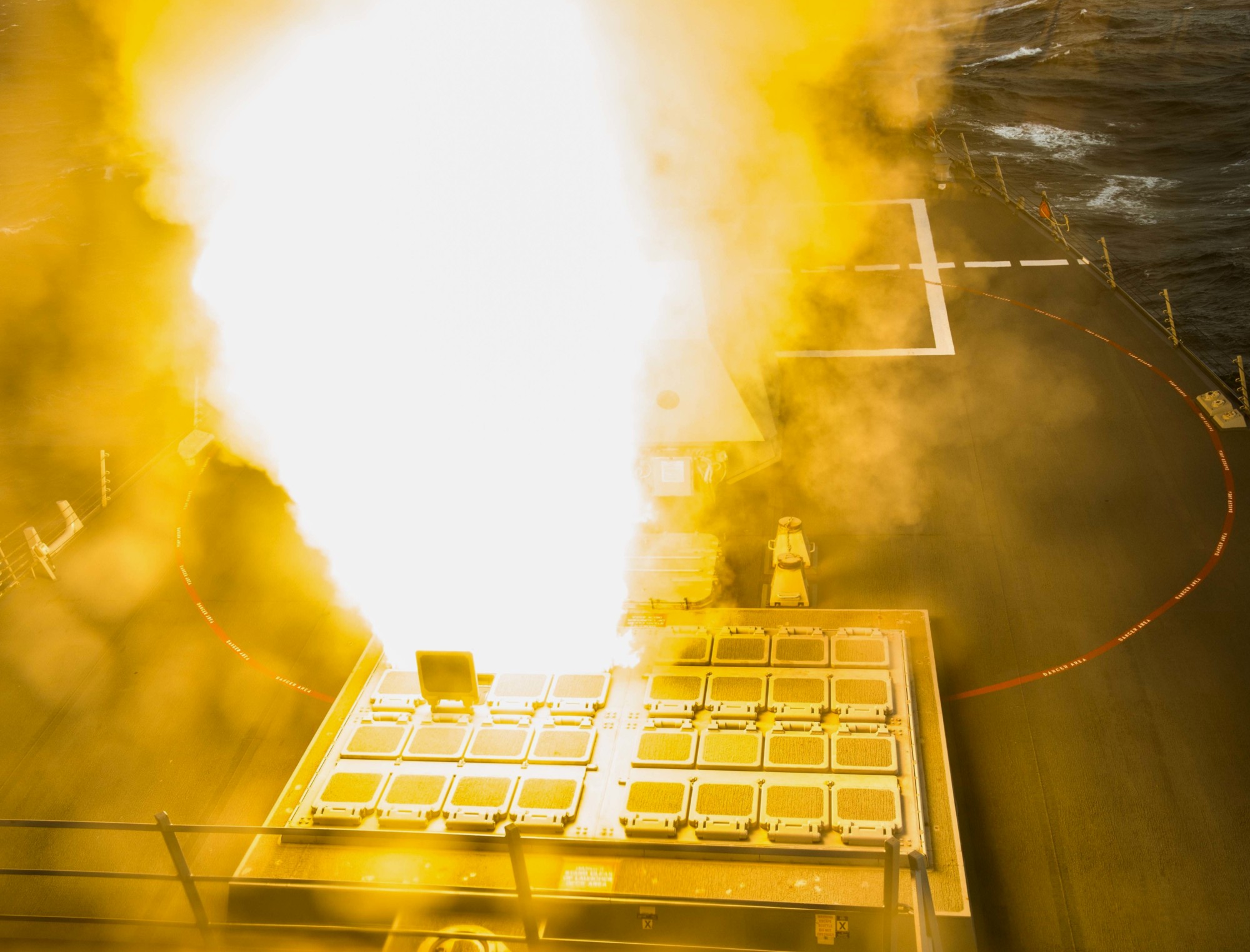 missile exercise from the forward Mk.41 VLS - Atlantic Ocean - February 2017  Fleet Week Port Everglades, Fort Lauderdale, Florida - May 2015  Navy Week New Orleans, Louisiana - April 2015 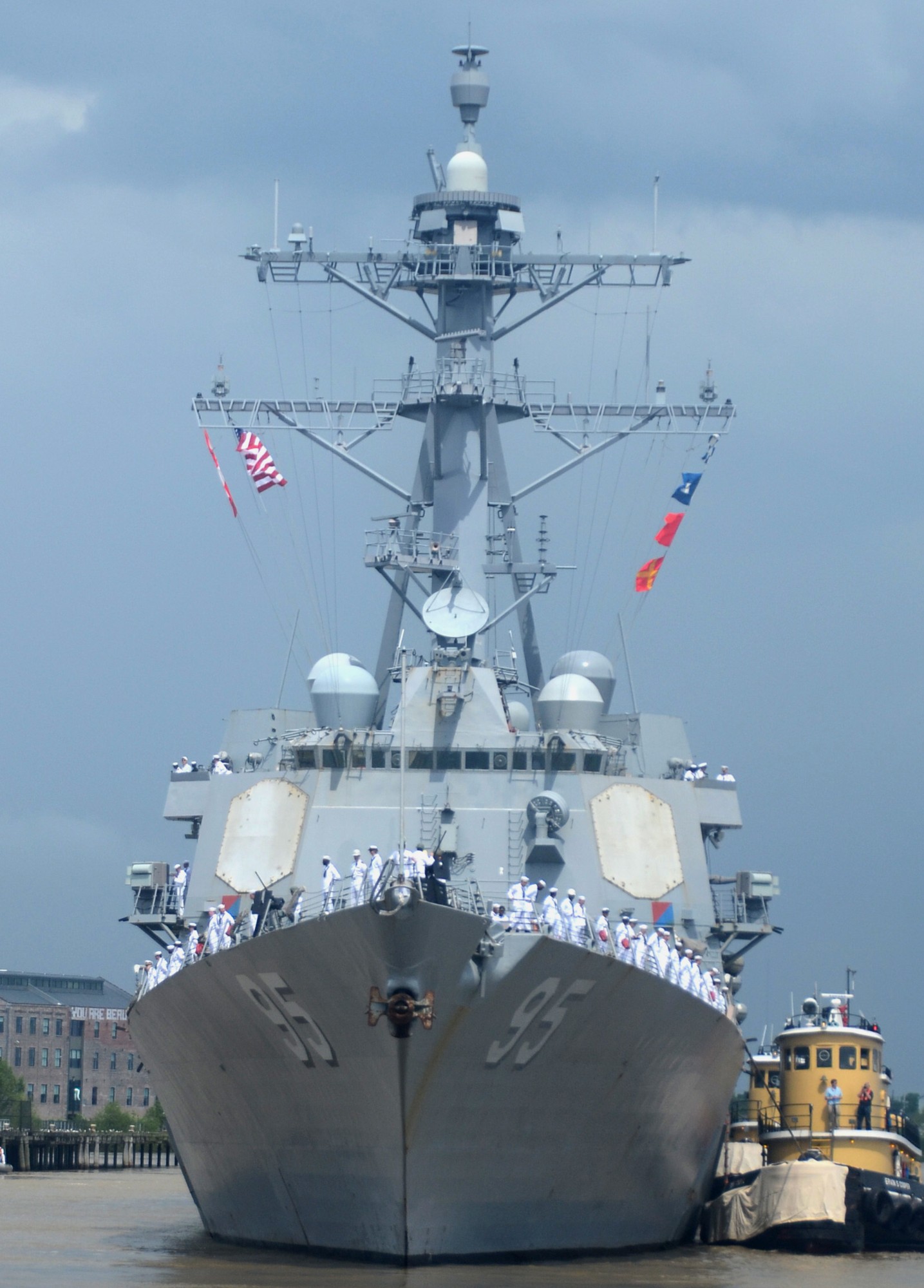 Navy Week New Orleans, Louisiana - April 2015 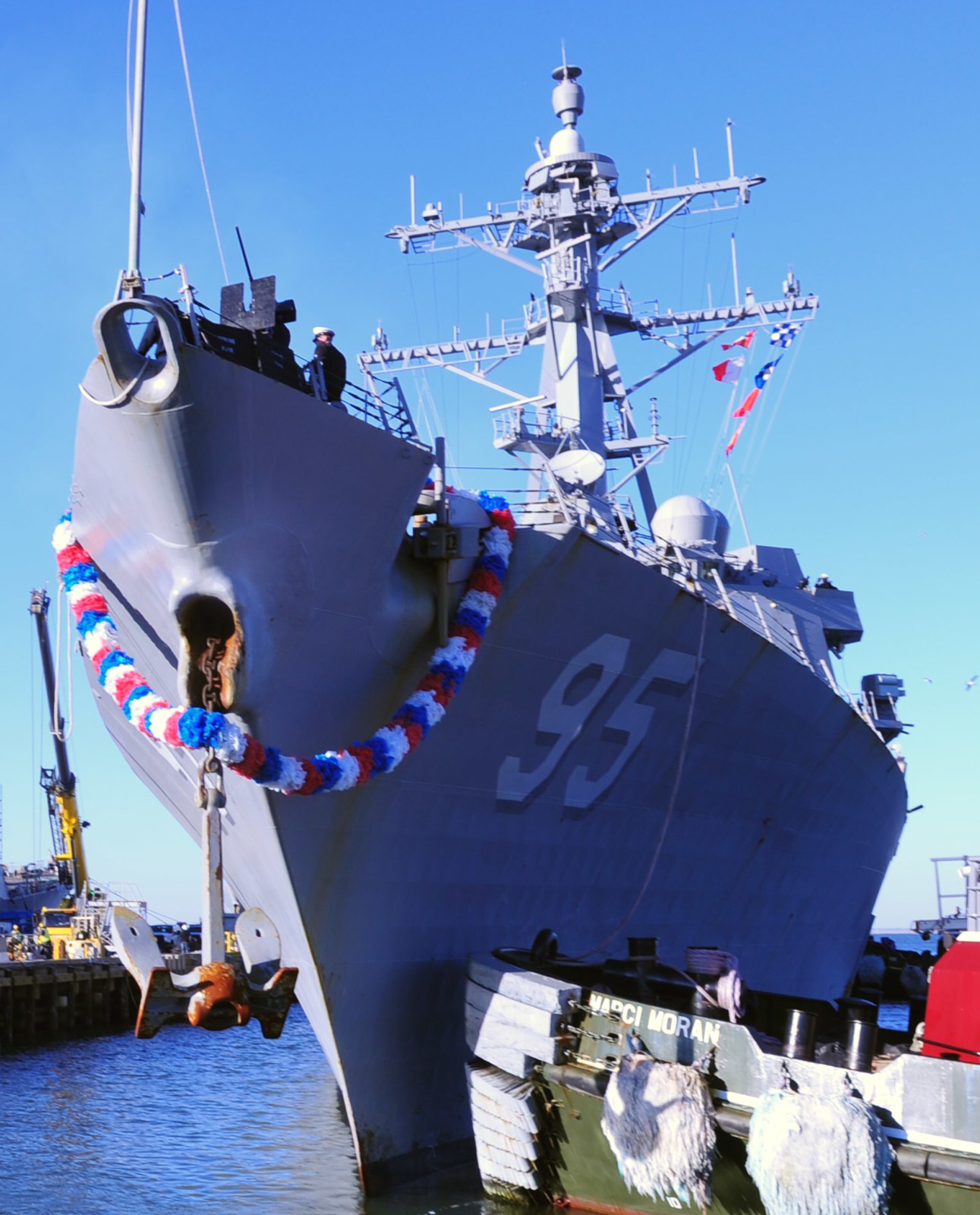 returning to Naval Station Norfolk, Virginia - January 10, 2015 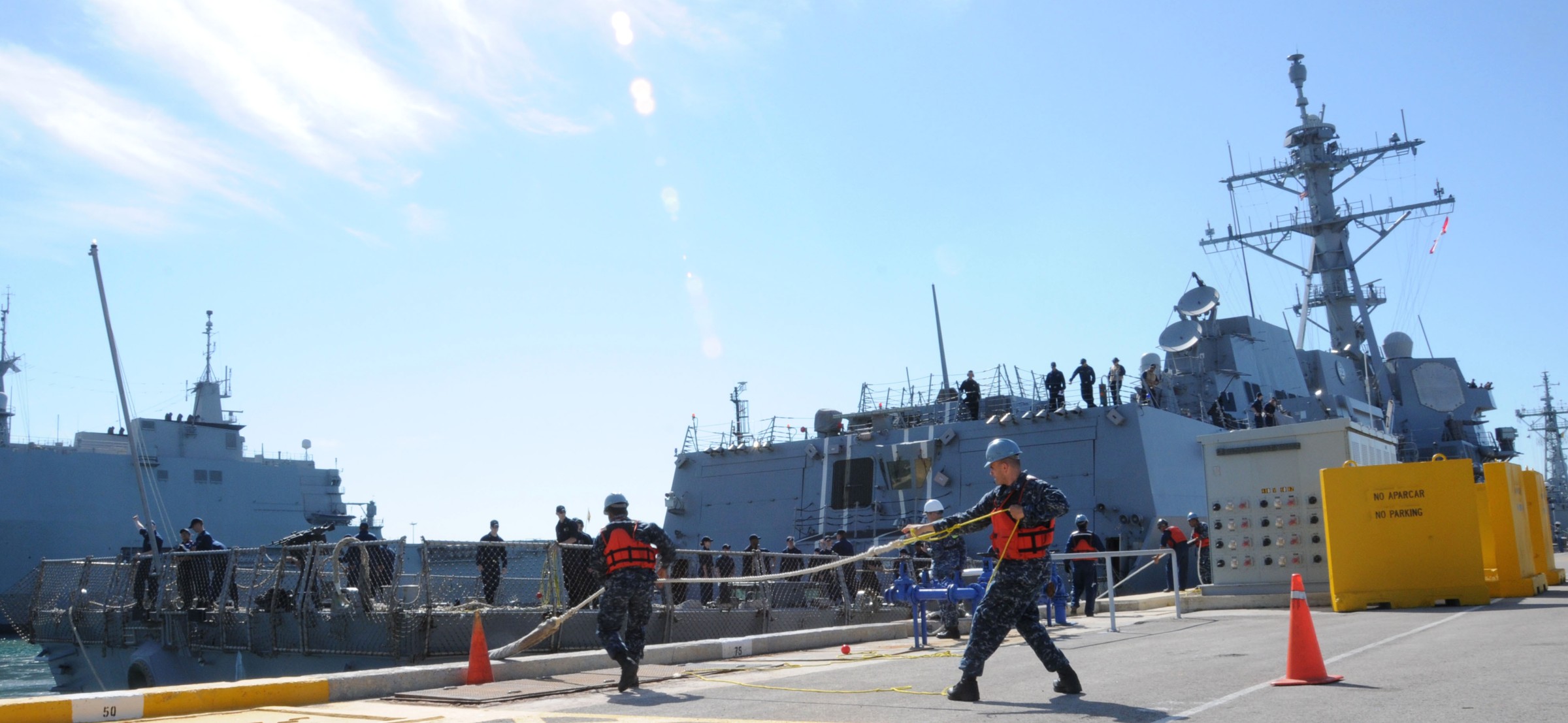 Naval Station Rota, Spain - June 2014  departing Naval Station Norfolk, Virginia - May 30, 2014  departing Naval Station Norfolk, Virginia - May 30, 2014 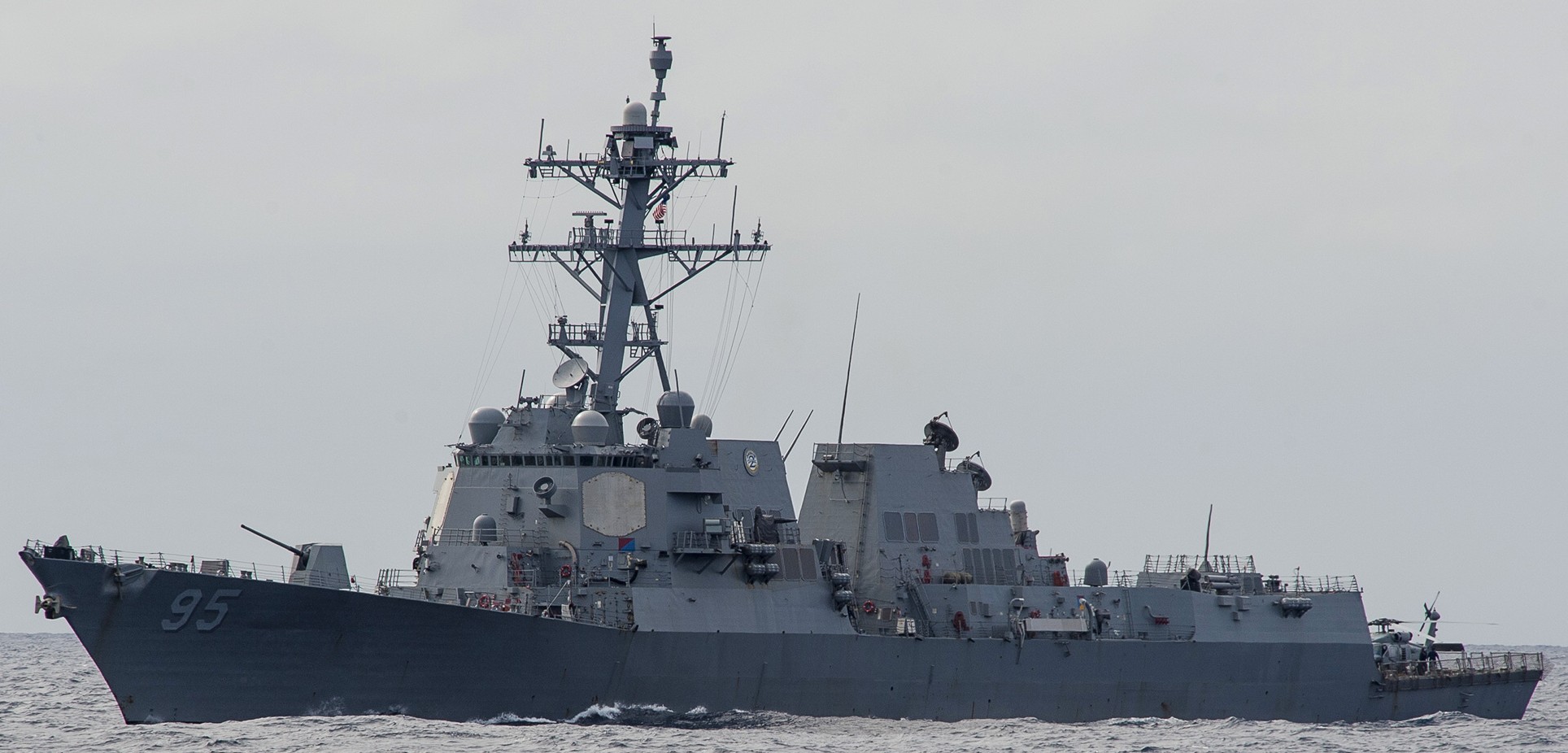 during NATO exercise Joint Warrior - Atlantic Ocean - March 2014 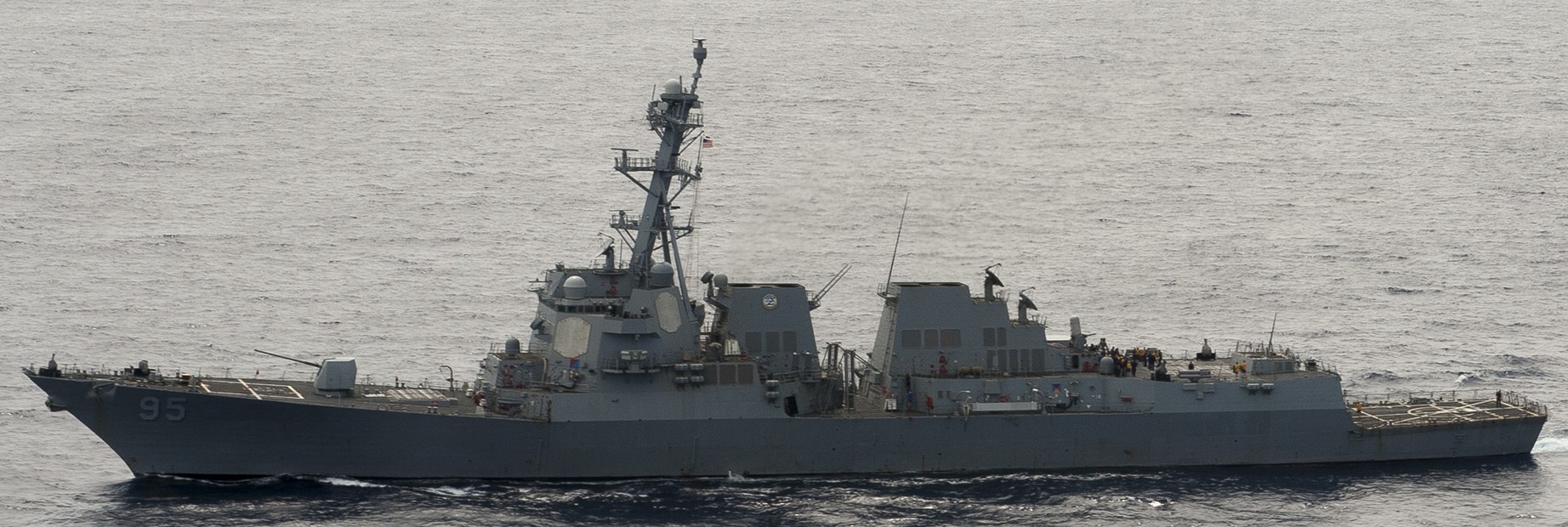 during NATO exercise Joint Warrior - Atlantic Ocean - March 2014 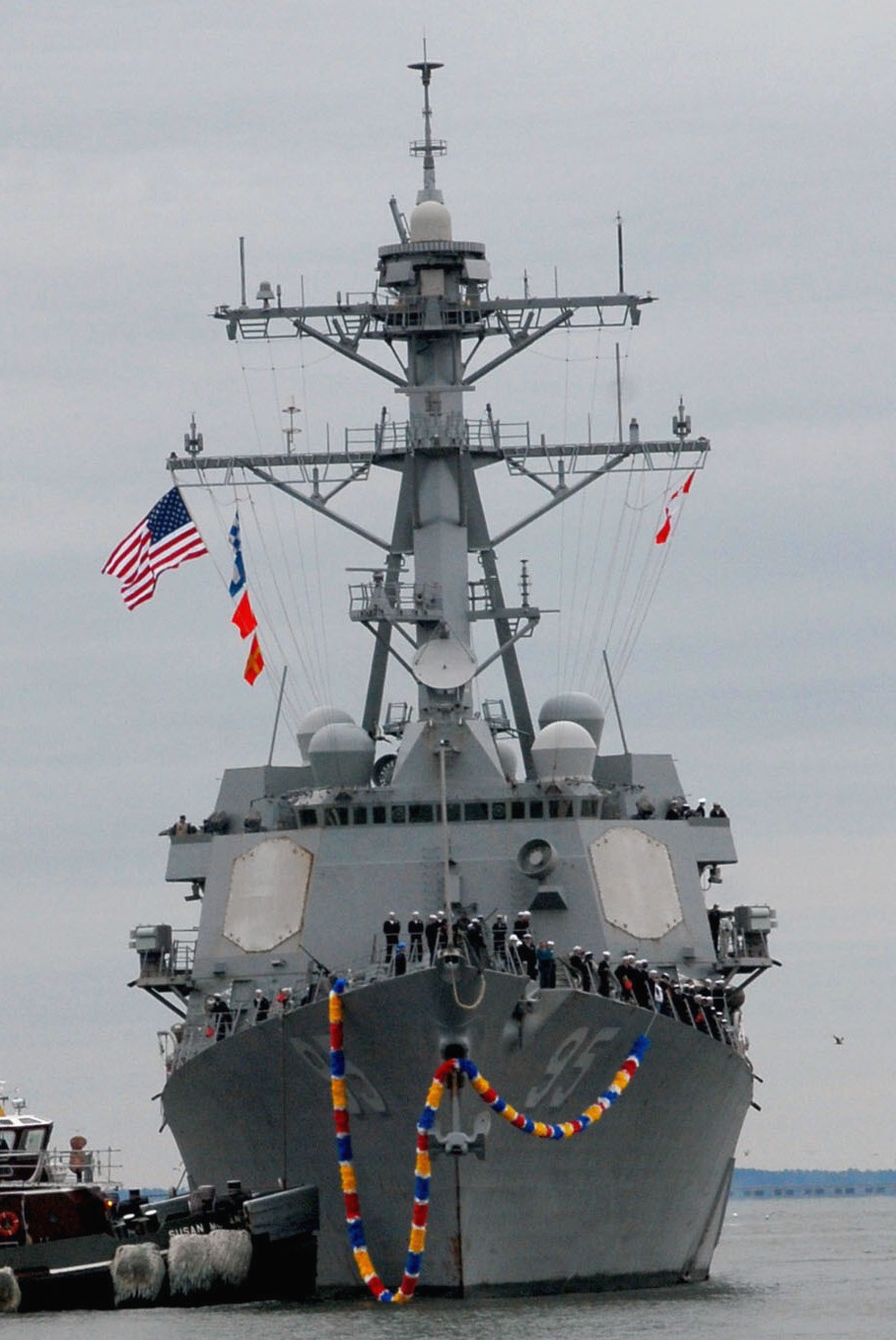 returning to Naval Station Norfolk, Virginia - November 4, 2012  Mediterranean Sea - November 2012  Suez Canal - August 2012 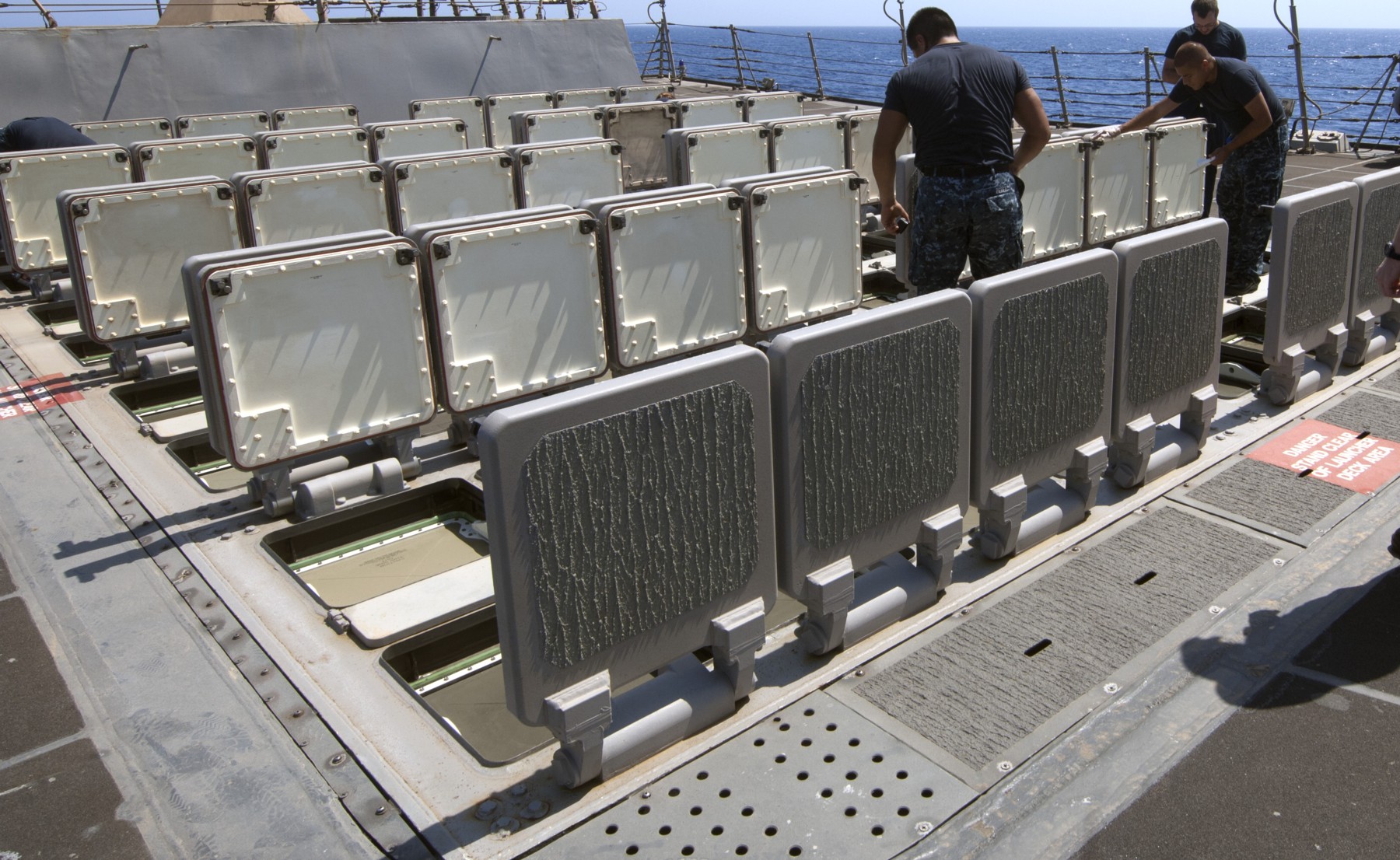 Mk.41 vertical launching system (VLS) maintenance - 5th Fleet AOR - August 2012  Mk.45 Mod.4 gun fire - 5th Fleet AOR - August 2012  Red Sea - June 2012 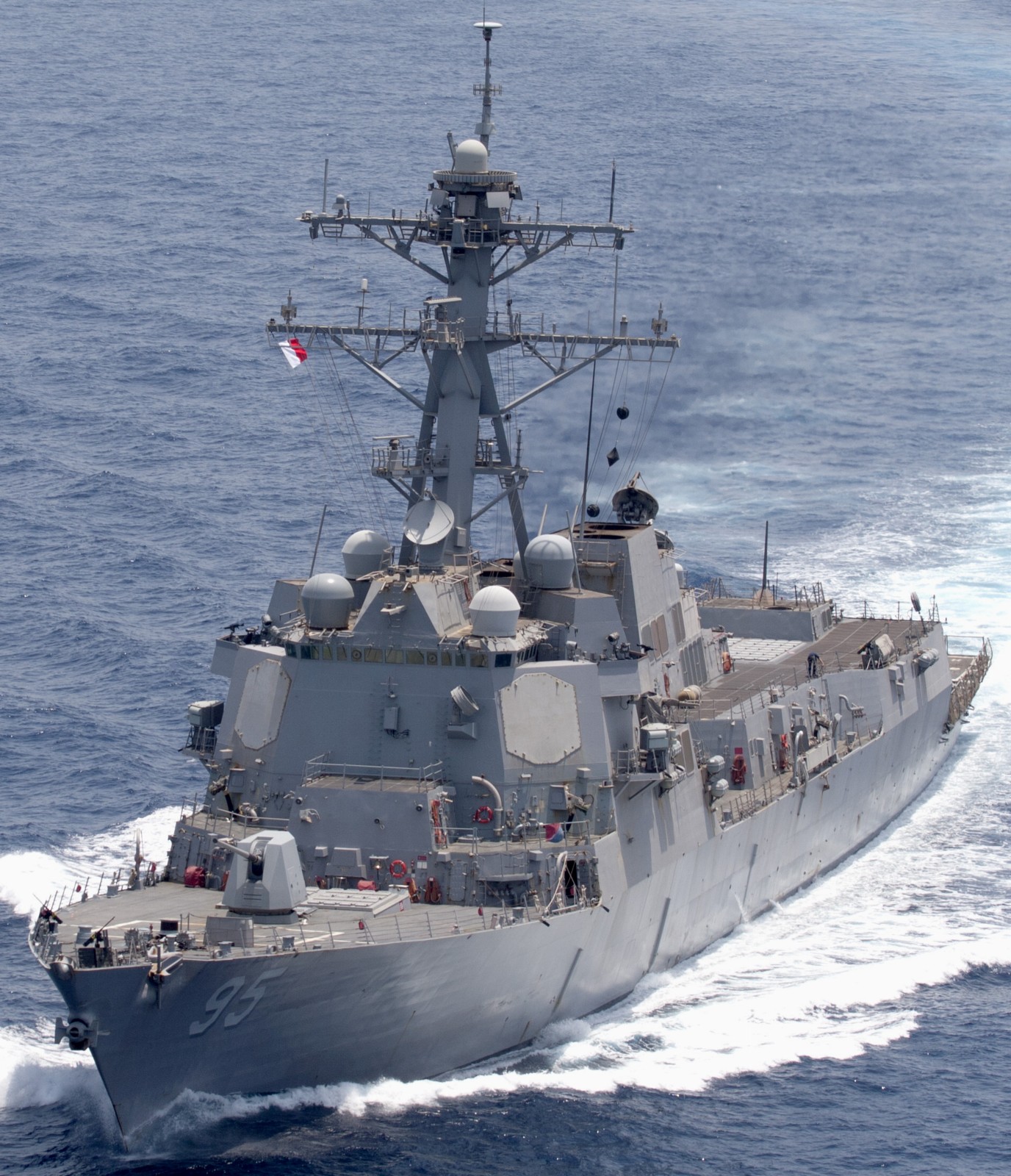 Red Sea - June 2012 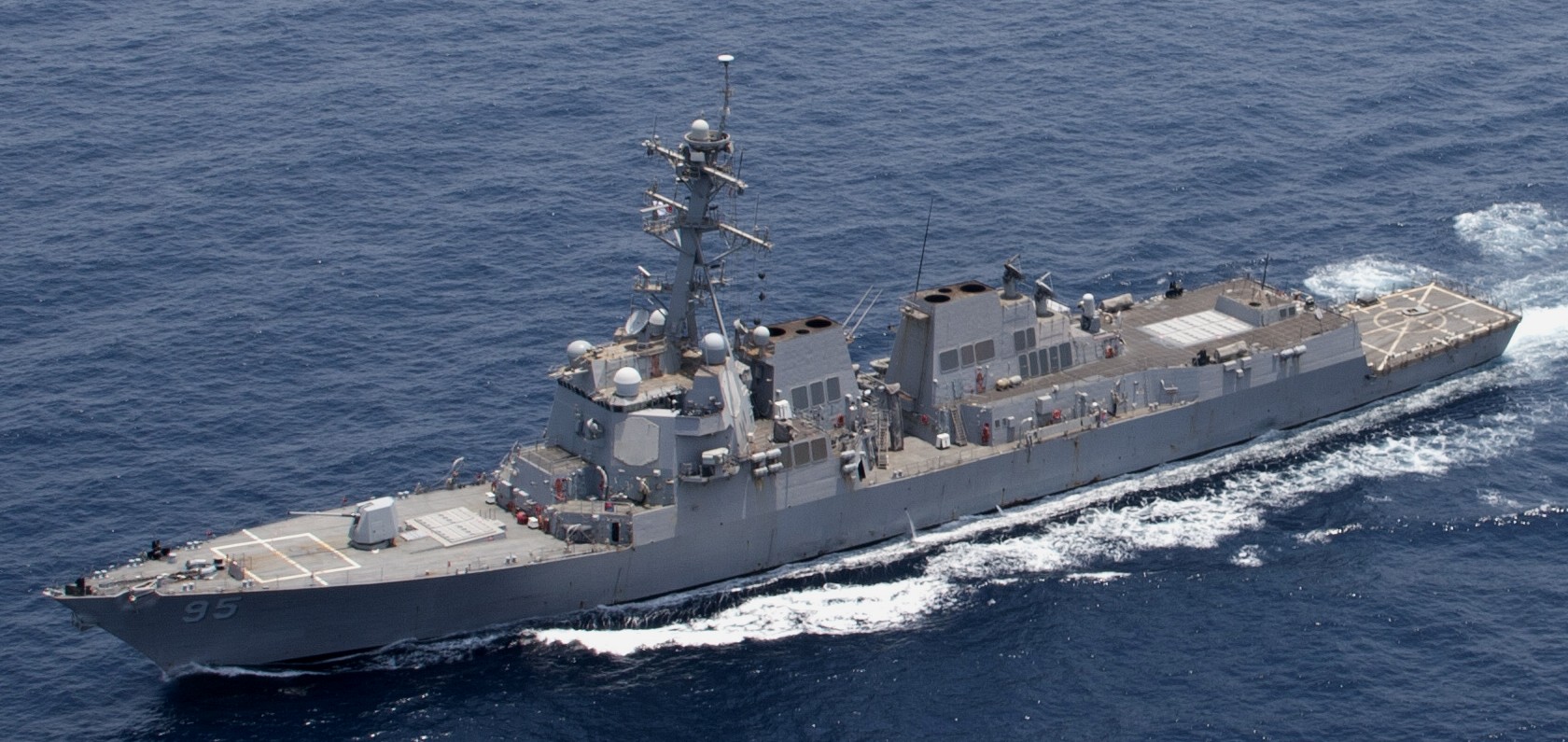 Red Sea - June 2012  Red Sea - June 2012 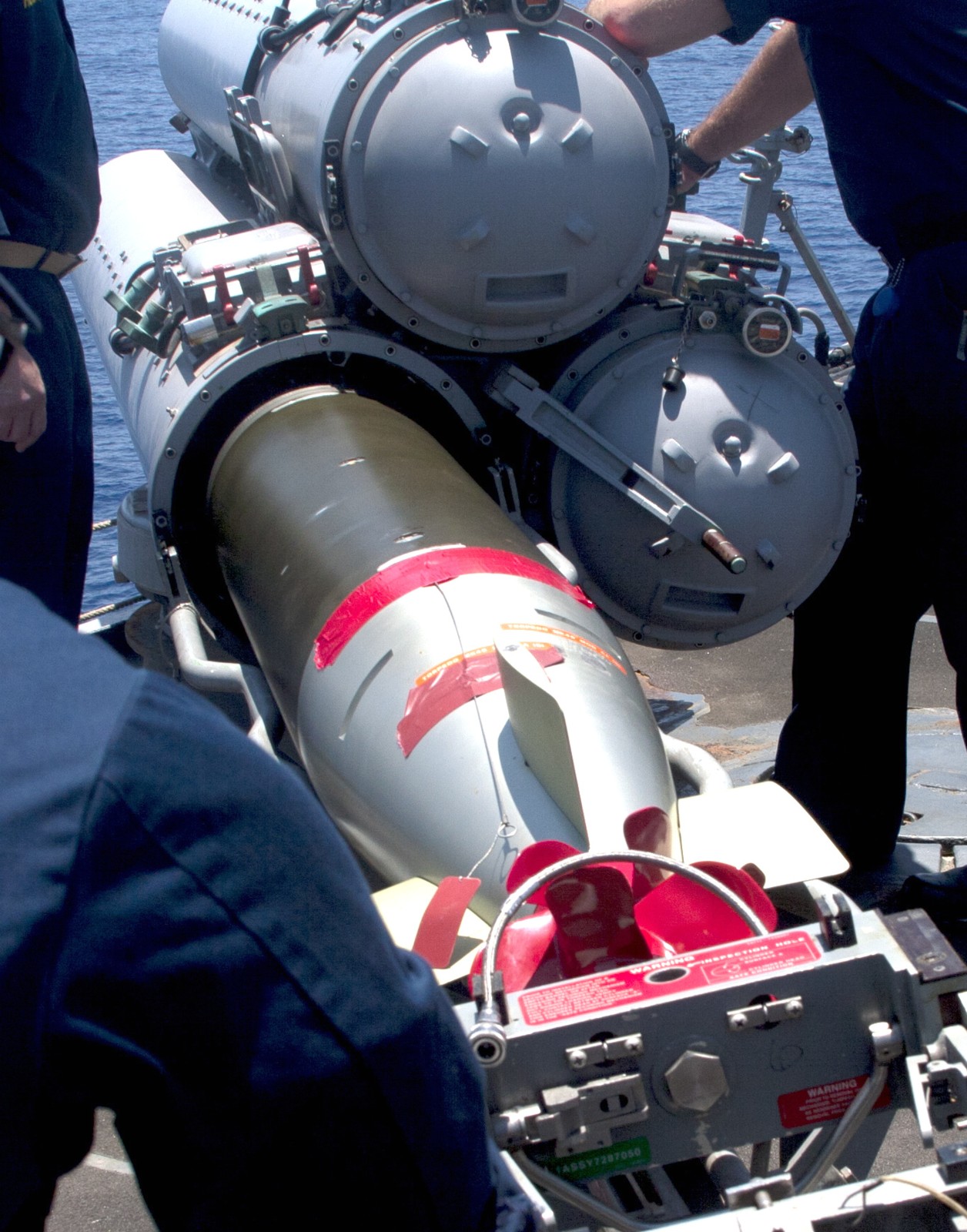 Mk.32 torpedo tube exercise - Red Sea - June 2012 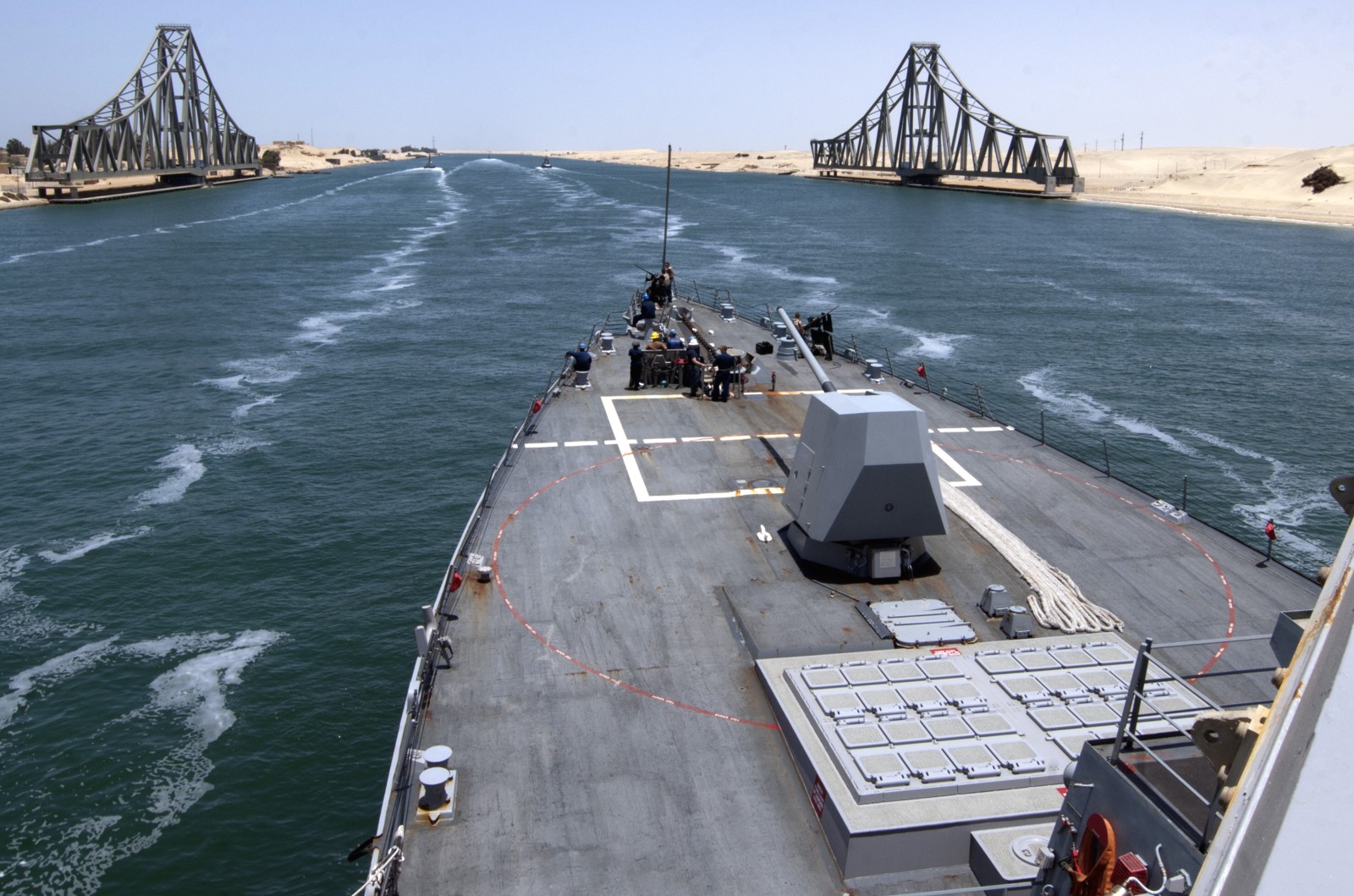 Suez Canal - June 2012 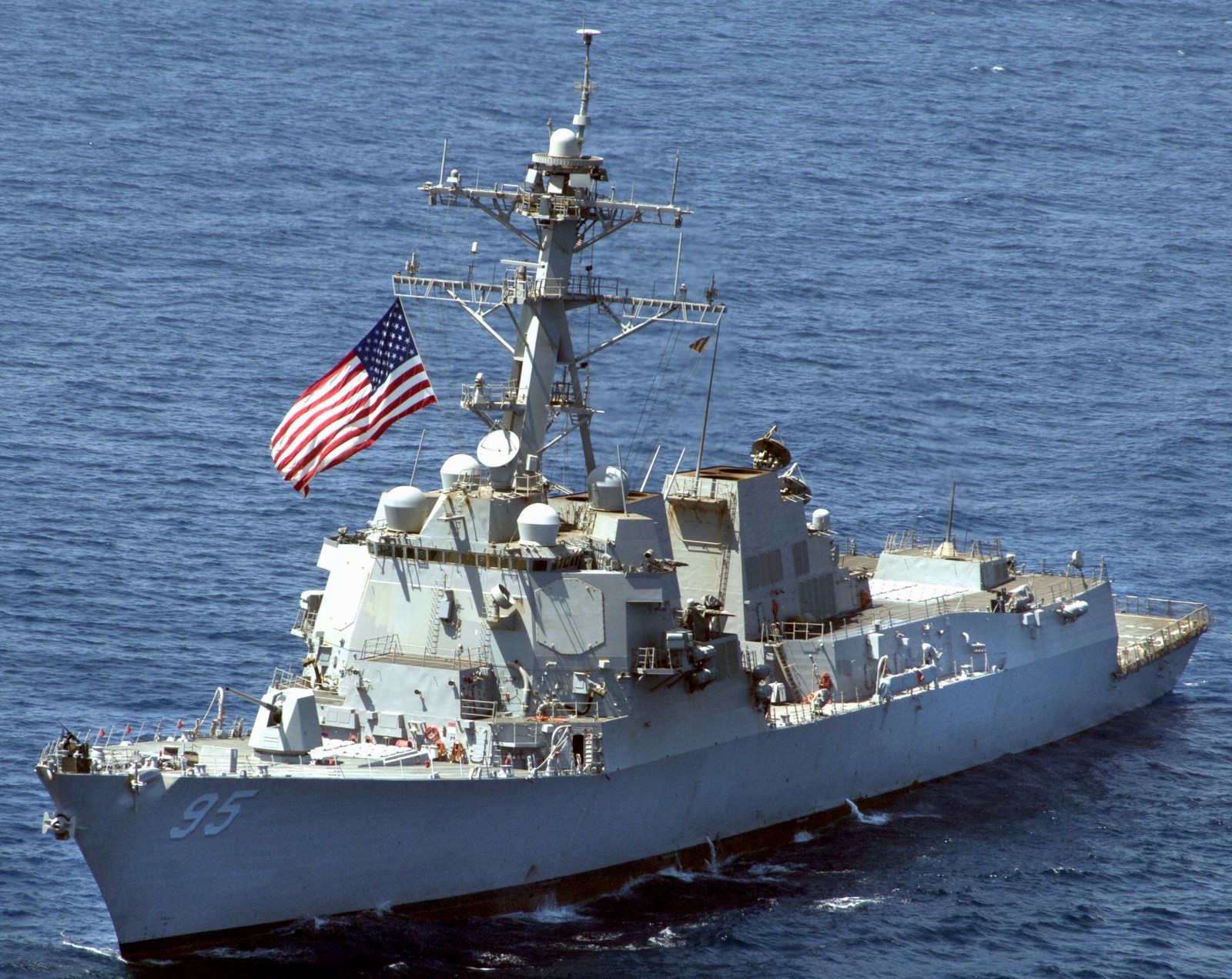 Red Sea - May 2012  Red Sea - May 2012 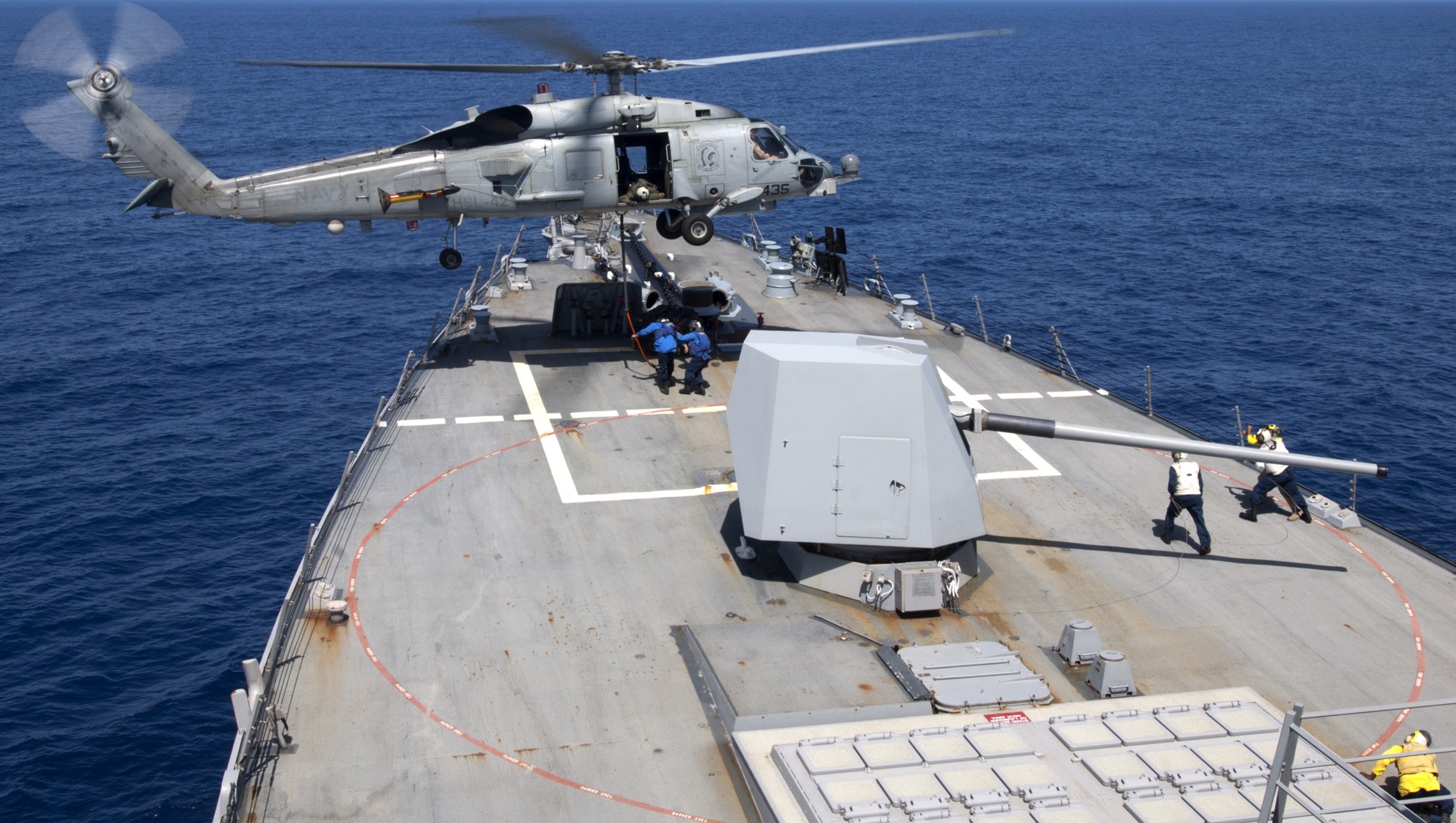 Red Sea - May 2012 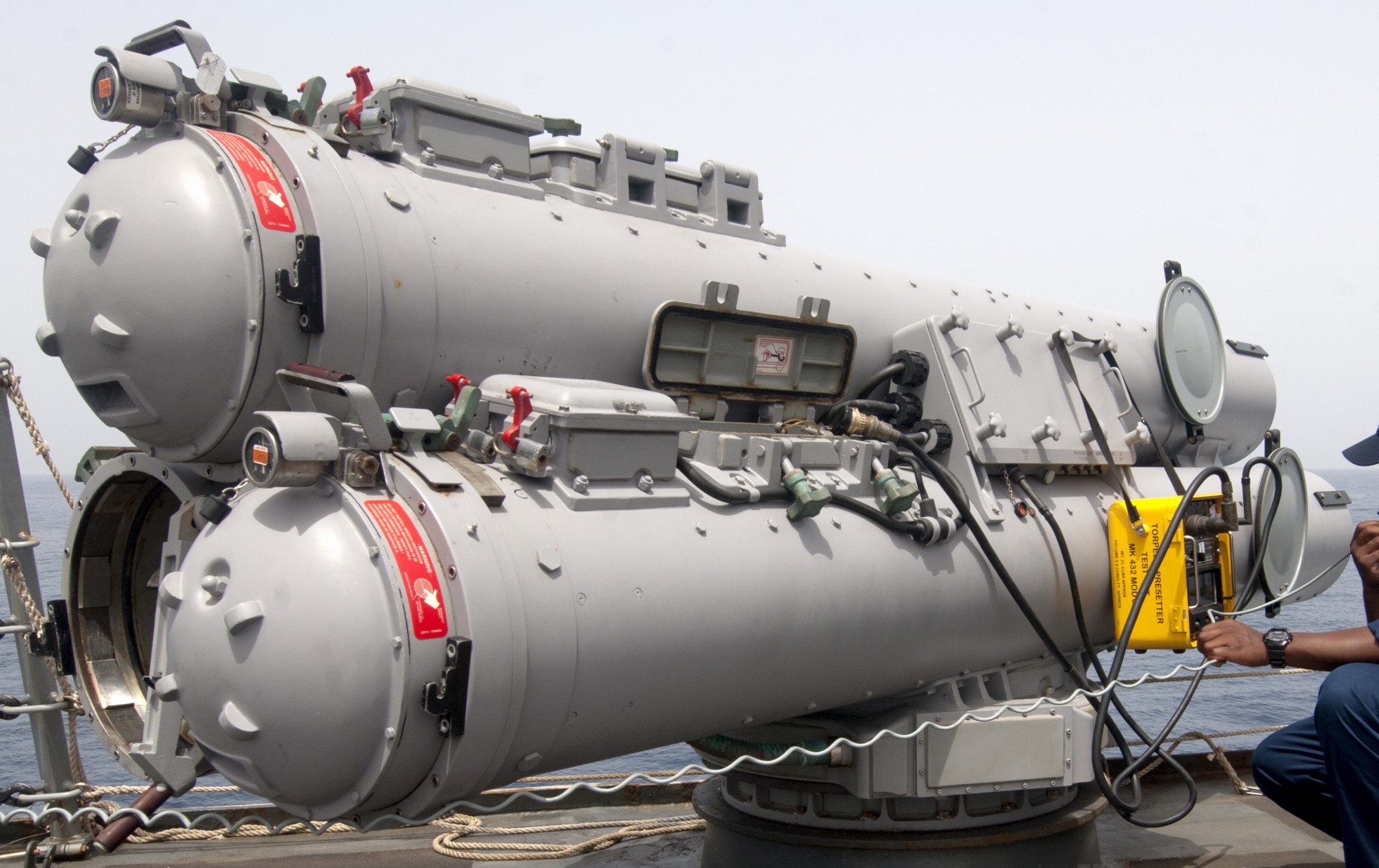 Mk.32 torpedo tube exercise - Red Sea - May 2012  flight deck control - Red Sea - May 2012  Suez Canal - April 2012  during exercise FRUKUS - Atlantic Ocean - June 2011 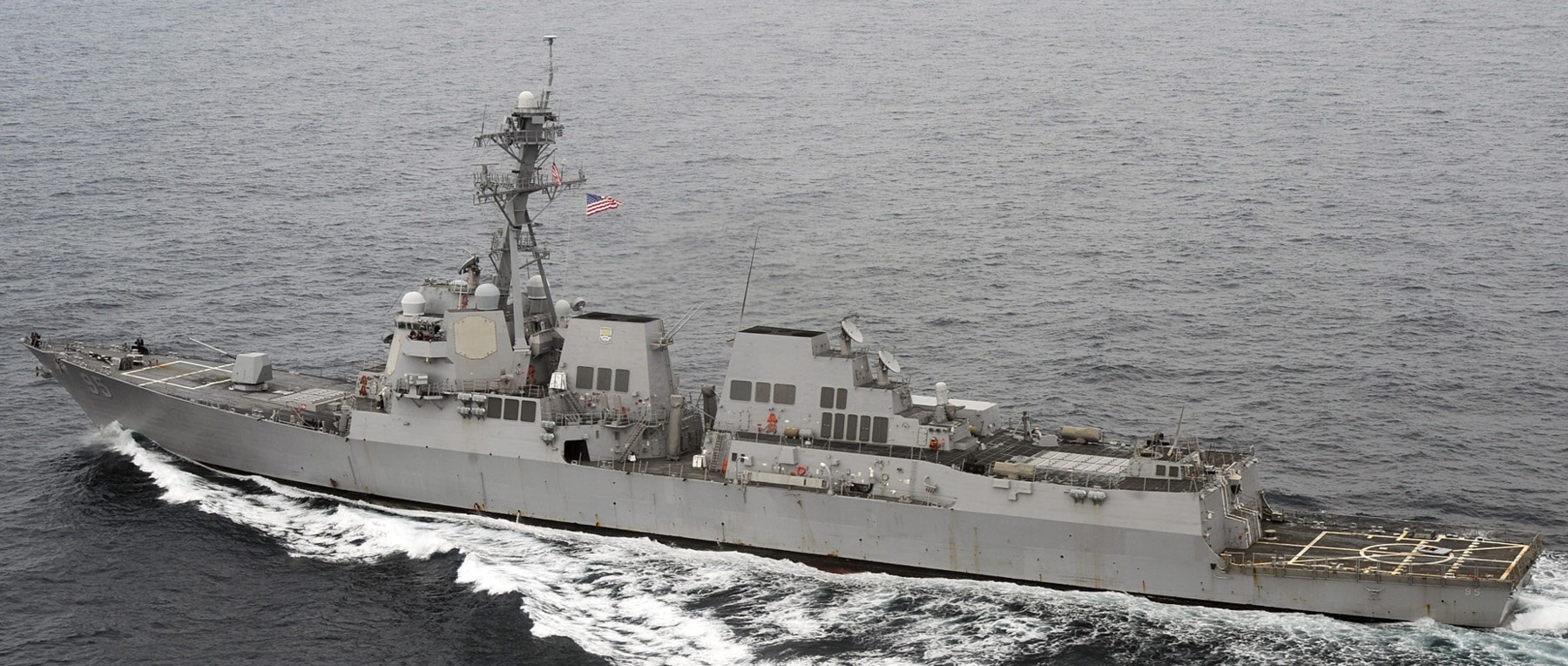 during exercise FRUKUS - Atlantic Ocean - June 2011  during exercise FRUKUS - Atlantic Ocean - June 2011  Atlantic Ocean - April 2011 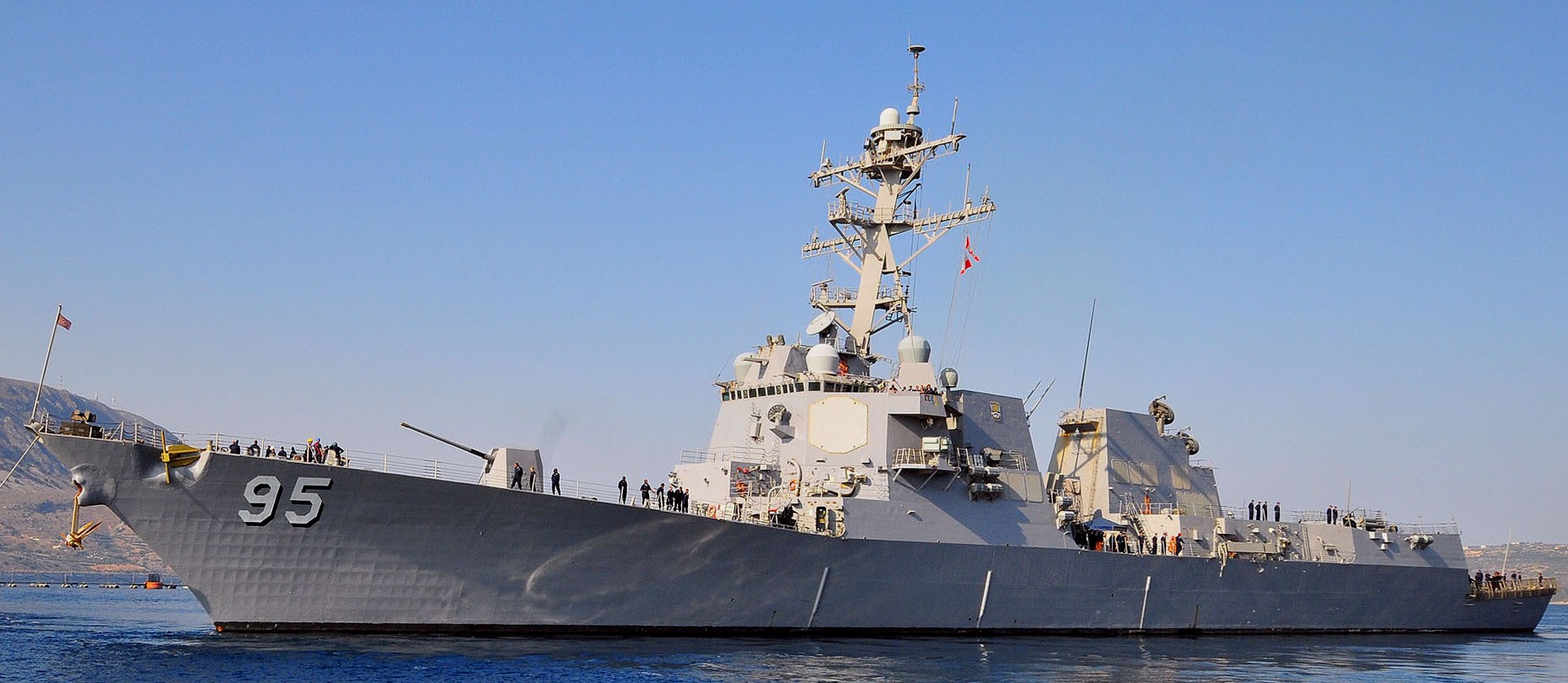 Naval Support Activity Souda Bay, Crete, Greece - October 2009 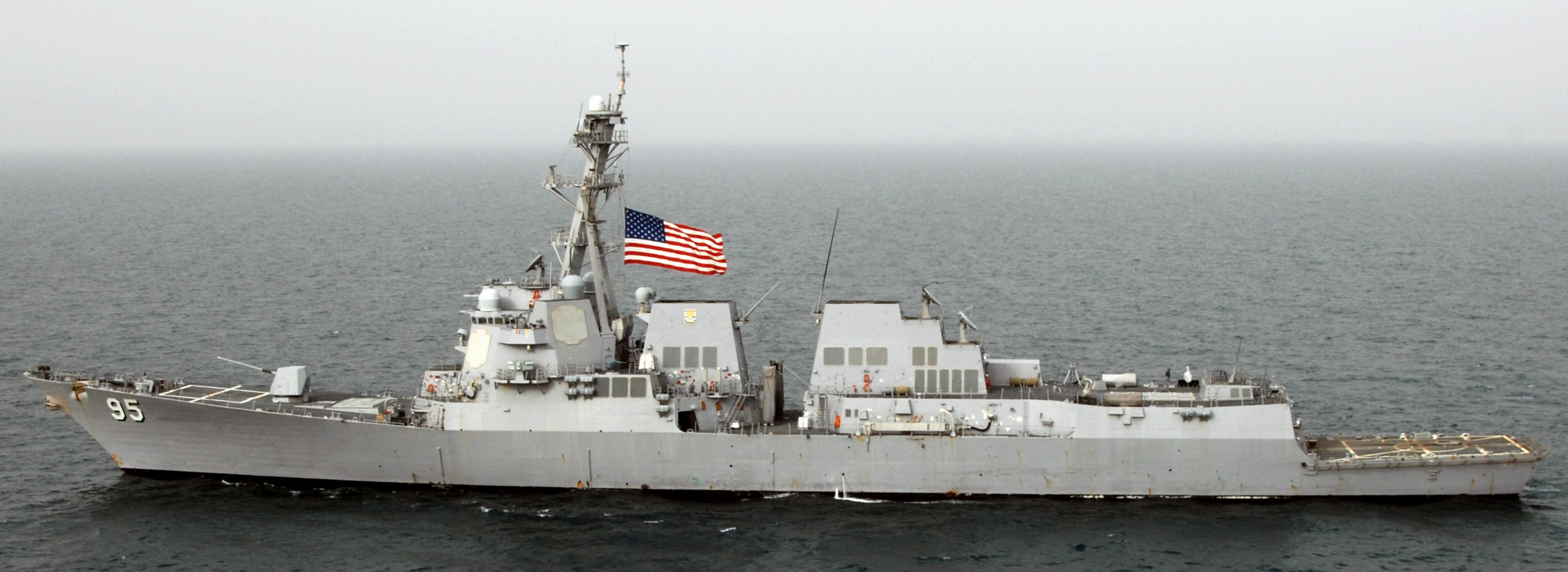 Red Sea - July 2009  Red Sea - July 2009  Red Sea - June 2009  Red Sea - September 2007 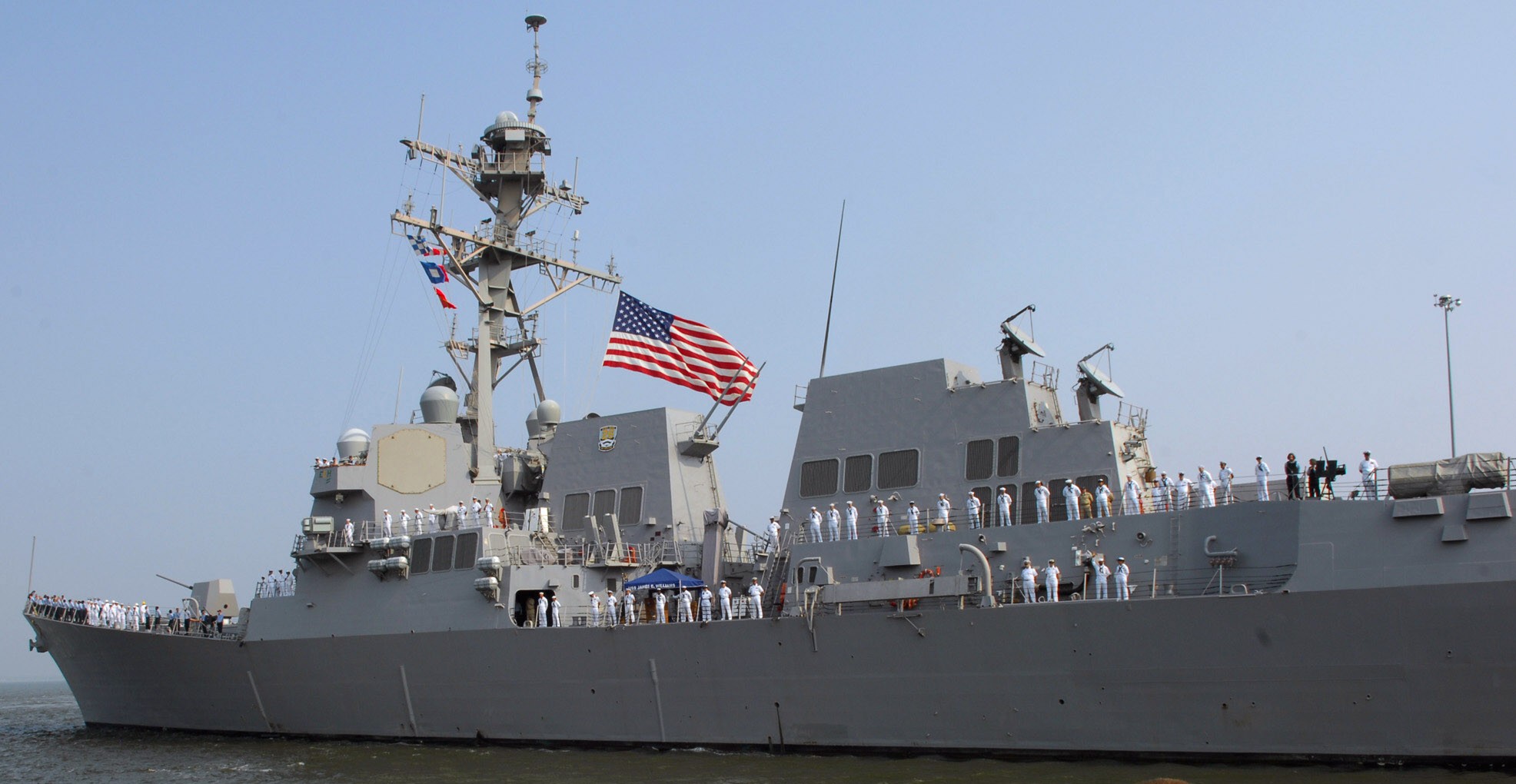 departing Naval Station Norfolk, Virginia - July 9, 2007  returning to Naval Station Norfolk, Virginia - October 17, 2006  returning to Naval Station Norfolk, Virginia - October 17, 2006  departing Naval Station Norfolk, Virginia - May 2, 2006  Atlantic Ocean - November 2005 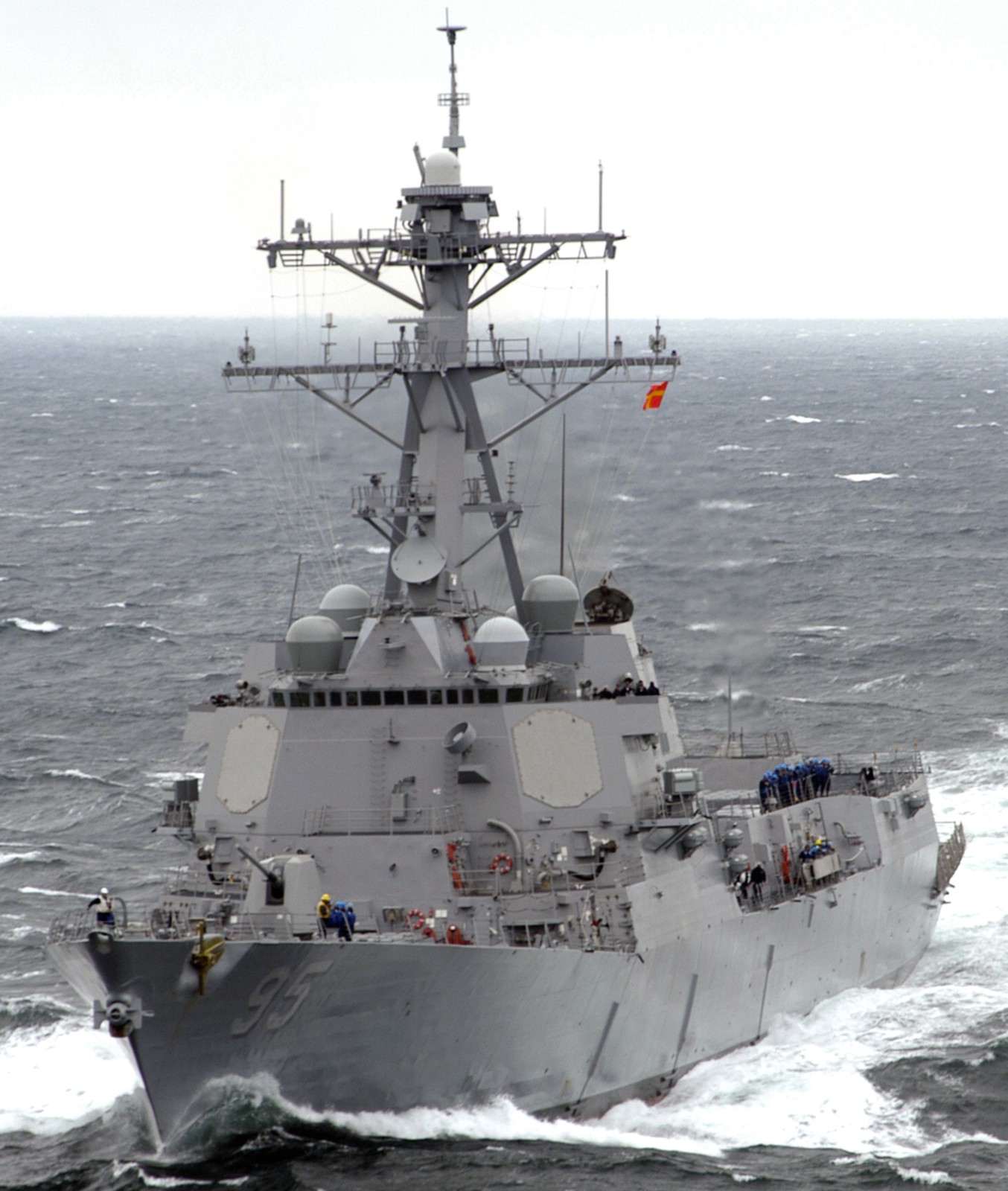 Atlantic Ocean - November 2005 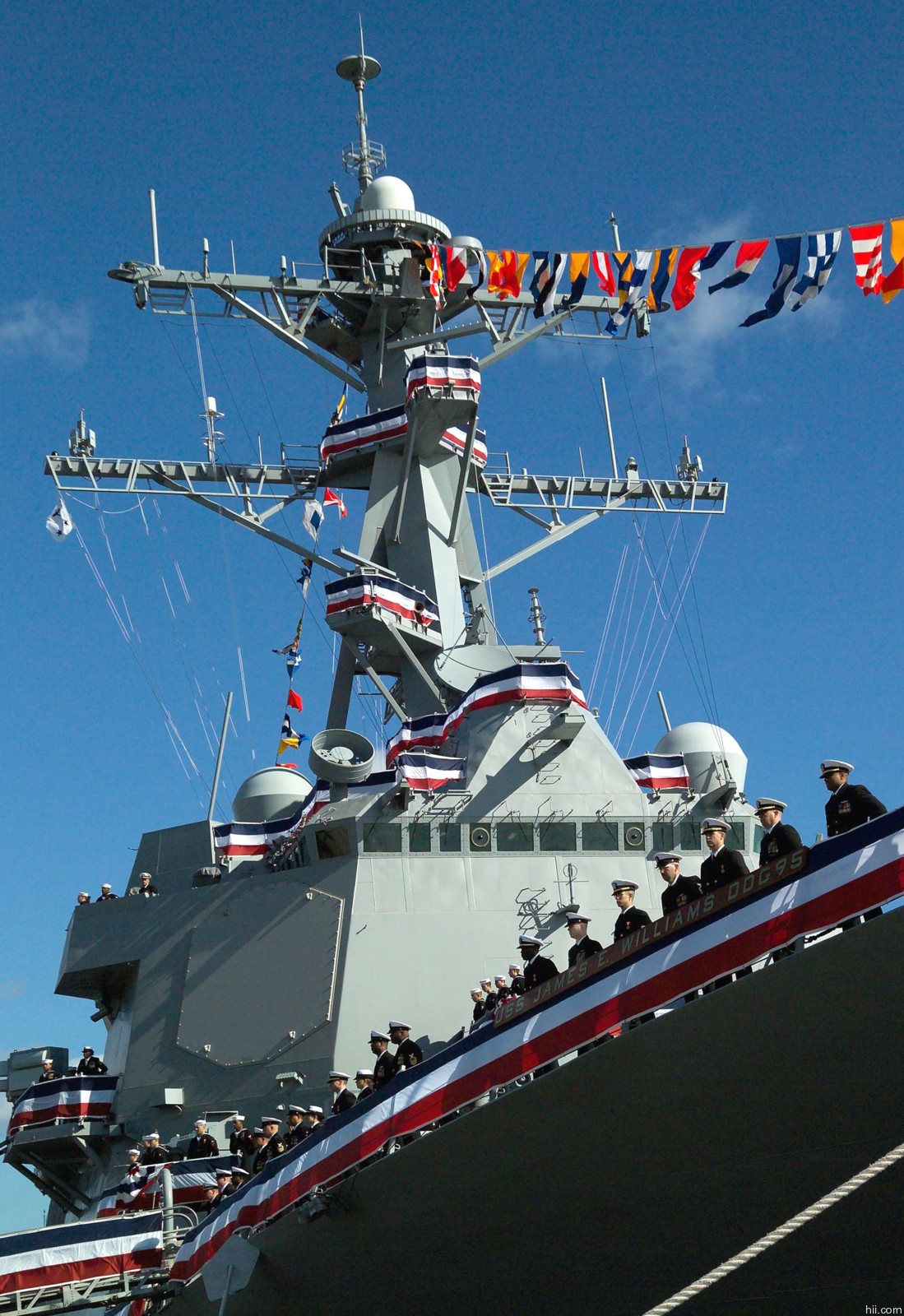 commissioning ceremony at Naval Weapons Station Charleston, South Carolina - December 11, 2004 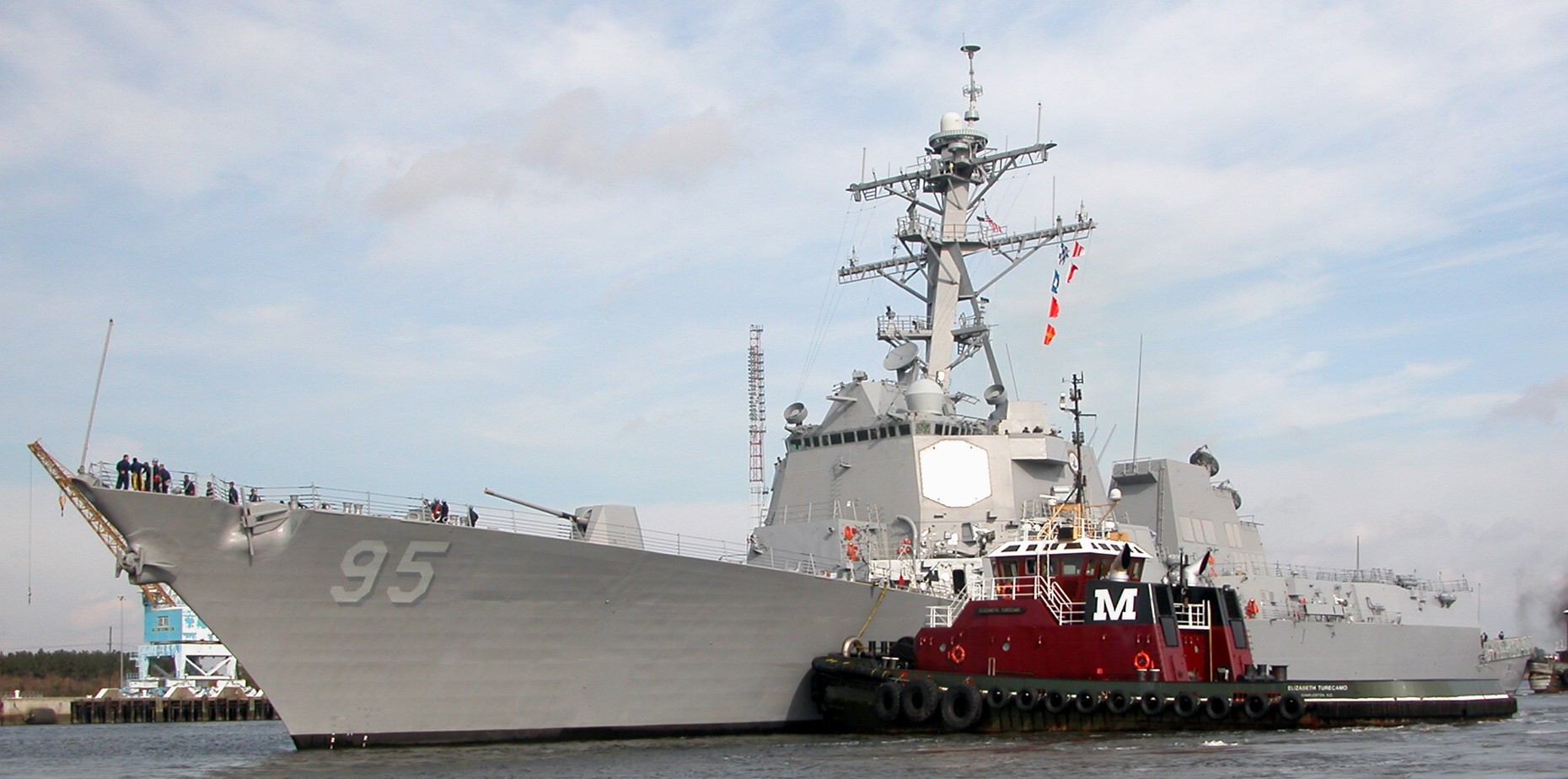 PCU James E. Williams enters the Cooper River prior to mooring at Naval Weapons Station Charleston, South Carolina - December 7, 2004 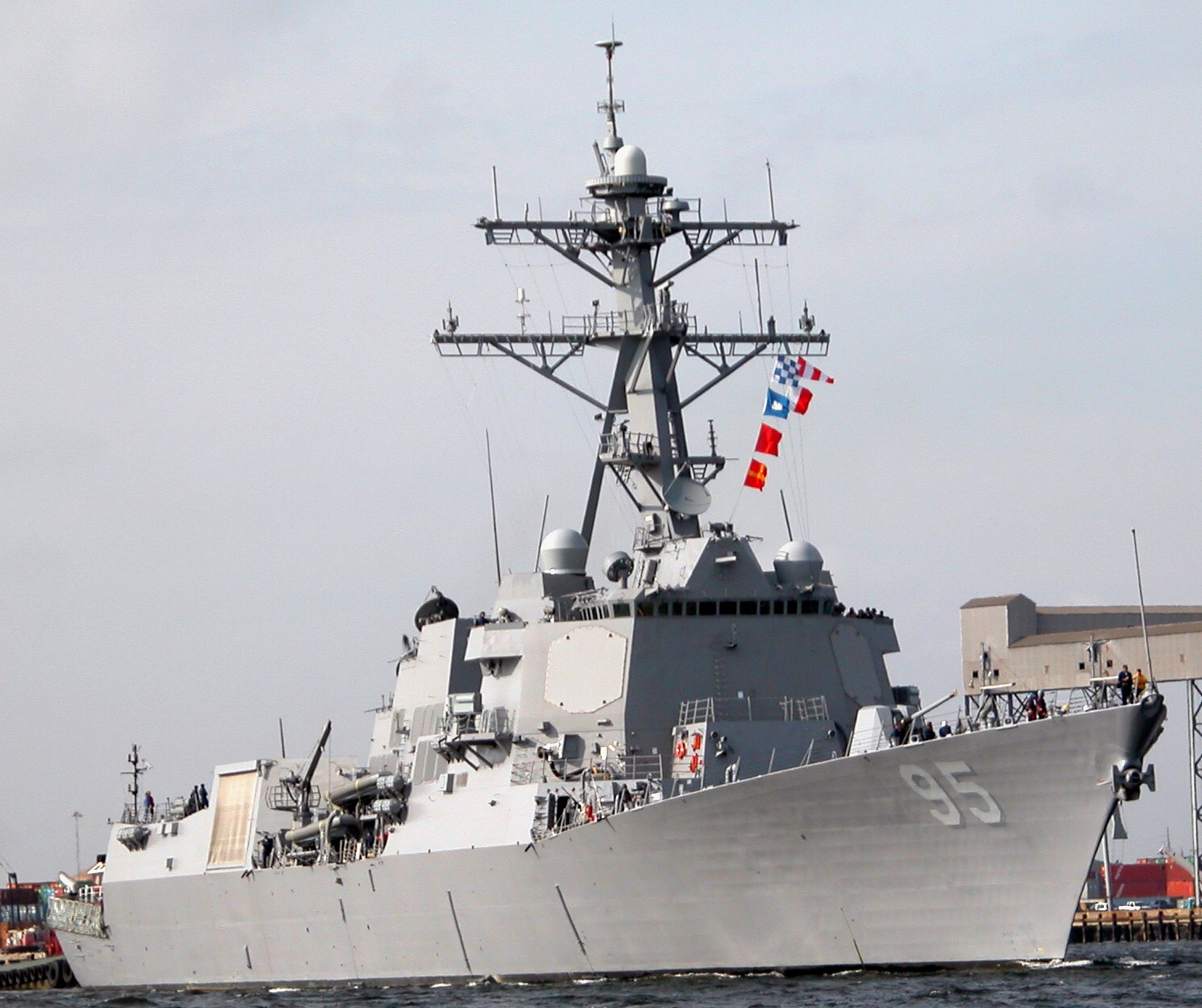 PCU James E. Williams enters the Cooper River prior to mooring at Naval Weapons Station Charleston, South Carolina - December 7, 2004  trials - Gulf of Mexico - July 2004  trials - Gulf of Mexico - July 2004  trials - Gulf of Mexico - July 2004  trials - Gulf of Mexico - July 2004 |
||
|
USS James E. Williams (DDG 95): USS James E. Williams was laid down on 15 July 2002 by the Northrop Grumman Ship Systems at Ingalls Shipbuilding in Pascagoula, Mississippi and launched on 25 June 2003. On 11 December 2004, The USS James E. Williams was commissioned in Charleston, South Carolina, sponsored by Elaine Weaver Williams, Petty Officer Williams' widow. Commander Philip Warren Vance, a 1986 graduate of the United States Naval Academy took command. She joined the Atlantic Fleet, Destroyer Squadron 22 and is homeported in Norfolk, Virginia. On 17 February 2006, CDR Vance was relieved by CDR Ian Michael Hall as Commanding Officer of USS James E. Williams. CDR Hall is a graduate of William & Mary and the former commander of USS Raven (MHC-61). On 2 May 2006, The USS James E. Williams deployed on its maiden deployment as part of the Global War on Terrorism Surface Strike Group (GWOT SSG) 06-2. The USS James E. Williams joined the Naval Station Norfolk, Va.,-based amphibious transport dock USS Trenton (LPD 14) and the guided-missile cruiser USS Hue City (CG 66) homeported at Naval Station Mayport, Fla., which surged April 18 as part of the Global War on Terrorism Surface Strike Group (GWOT SSG) 06-2. On 17 October 2006, The USS James E. Williams completed its first deployment conducting anti-piracy operations off the coast of Somalia as part of the maritime security operations. On 28 June 2007, CDR Hall was relieved by CDR Timothy R. Trampenau. The USS James E. Williams deployed again on 9 July 2007 as a part of the USS Enterprise Carrier Strike Group. The strike group consisted of USS Enterprise (CVN-65), USS Forrest Sherman (DDG 98), USS Arleigh Burke (DDG 51) and USS Stout (DDG 55); the guided-missile cruiser USS Gettysburg (CG 64); and the fast-attack submarine USS Philadelphia (SSN 690) all based in Norfolk, and also the fast combat support ship USNS Supply (T-AOE 6) based out of Earle, NJ. On the morning of 30 October 2007, Combined Maritime Forces Headquarters, based in Bahrain, received a call from the International Maritime Bureau, located in Kuala Lumpur, Malaysia, providing the status of the North Korean cargo vessel Dai Hong Dan, which had been taken over Oct. 29 by Somali pirates. The ship was approximately 60 nautical miles (110 km) northeast of Mogadishu, Somalia. At that time, The USS James E. Williams was about 50 nautical miles (93 km) from the vessel and sent a helicopter to investigate the situation. The USS James E. Williams arrived in the vicinity of the Korean ship midday local time and contacted the pirates via bridge-to-bridge radio, ordering them to give up their weapons. At that point, the Korean crew had confronted the Somali pirates, regained control of the ship and began communicating with the USS James E. Williams, requesting medical assistance. The crew said the pirates had been in control of the bridge, but the crew had retained control of the steering and engineering spaces. The USS James E. Williams crew provided care and assistance for approximately 12 hours to crew members and Somali pirates aboard Dai Hong Dan. Six pirates were captured and one was killed. The pirates remained aboard Dai Hong Dan. In November 2007, The USS James E. Williams aided the crew of the Taiwanese ship, M/V Ching Fong Hwa 168. After the Somali pirates returned to shore, the destroyer escorted the Taiwanese ship out of Somali waters and provided needed supplies and medical assistance. On 19 December 2007, she returned from her second deployment to the Fifth Fleet AOR in support of Operations Iraqi and Enduring Freedom. In December 2008, CDR Trampenau was relieved by CDR Paul Marquis. After being relieved, CDR Trampenau reported to Deputy, Combat Systems Integration and OA Requirements Officer (N866B). On 20 April 2009, James E. Williams left on her 3rd deployment in 3 years, deploying to the sixth and fifth Fleet areas of operations from Naval Station Norfolk as the lead element of the Bataan Amphibious Ready Group. The James E. Williams conducted maritime security operations in the Mediterranean Sea and Persian Gulf regions, and work with international maritime forces to ensure security and awareness in the maritime domain. She returned to her homeport at Naval Station Norfolk on 19 October 2009. During the 2014-2015 deployment, James E. Williams made port calls to Rota, Spain; Djibouti, Djibouti; Port Victoria, Seychelles; and Port Louis, Mauritius. On 3 August 2017, the destroyer visited Trondheim Seilforening in Trondheim, Norway. On 29 November 2017 she visited the Port of Odesa, Ukraine. During the 2017 Deployment, the ship visited Rotterdam, Netherlands; Kiel, Germany (as a part of Kiel Week); Reykjavik, Iceland; Rota, Spain; Trondheim, Norway; Bergen, Norway; Riga, Latvia; Lisbon, Portugal; Souda Bay, Greece; Manama, Bahrain; Jeddah, Saudi Arabia; and Odesa, Ukraine prior to returning home to Norfolk, VA on 23 December 2017. The ship's crew also earned their Blue Nose for crossing into the Arctic Circle. On 15 February 2021, James E. Williams and Colombian Navy frigate ARC Antioquia (FM-53) conducted a passing exercise in the Caribbean Sea. |
||
|
Boatswain’s Mate First Class James Elliot Williams (June 13,
1930 - October 13, 1999): James Elliott Williams was born in Fort Mill, South Carolina and moved two months later with his parents to Darlington, South Carolina where he spent his early childhood and youth. He attended the local schools and graduated from St. John's high school. He was a sailor of the United States Navy during the 1950s and 1960s. He is, also, the most highly decorated enlisted man in the history of the U.S. Navy. In July 1947, at the age of 16, he entered the United States Navy where he served for twenty years, retiring in April 1967. During those twenty years he served in both the Korean and Vietnam War. In Vietnam, the petty officer was assigned to the River Patrol Force whose mission was to intercept Viet Cong arms shipments on the waterways of South Vietnam's Mekong Delta. On 31 October 1966, Boatswain's Mate 1st Class Williams, patrol commander for his boat, River Patrol Boat 105, and another PBR was searching for Viet Cong guerrillas operating in an isolated area of the Mekong Delta. Suddenly, Communist guerrillas manning two sampans opened fire on the Americans. When Williams and his men neutralized one boat crew, the other one escaped into a nearby canal. The PBR sailors gave chase and soon found themselves in a beehive of enemy activity as Viet Cong guerrillas opened up with rocket propelled grenades and small arms against the Americans from fortified river bank positions. Against overwhelming odds, several times Williams led his PBRs against concentrations of enemy junks and sampans. He also called for support from the heavily armed UH-1B Huey helicopters of Navy Helicopter Attack (Light) Squadron 3, the "Seawolves." When that help arrived, he kicked off another attack in the failing light, cleverly turning on his boats' searchlights to illuminate enemy forces and positions. As a result of the three-hour battle, the American naval force killed numerous Viet Cong guerrillas, destroyed over fifty vessels, and disrupted a major enemy logistic operation. BM1 Williams not only displayed great courage under fire, but a keen understanding of how his sailors, weapons, and equipment could be used to achieve victory. On 14 May 1968, President Lyndon Johnson, in the name of Congress, presented Williams the Medal of Honor. His other awards include the Navy Cross, Silver Star (with one gold award star), the Legion of Merit (with Valor Device), the Navy and Marine Corps Medal with gold star, Bronze Star Medal with two gold stars, Vietnam Cross of Gallantry with Gold Star and Palm, Navy Commendation Medal, Navy and Marine Corps Presidential Unit Citation with one service star, Purple Heart with two gold stars, Vietnam Service Medal with bronze service star, Republic of Vietnam Campaign Medal, National Defense Service Medal with bronze service star, United Nations Service Medal, Korean Service Medal with two bronze service stars, Korean Presidential Unit Citation, Korean War Service Medal, and the Navy Good Conduct Medal with four bronze service stars. Chief Petty Officer Williams retired from active service in 1967 and was employed with the Wackenhut Corporation. In 1969, he was appointed U. S. Marshal for the District of South Carolina where he served until May 1977. He was then transferred to Federal Law Enforcement Training Center, Glynco, Georgia as an instructor and National Armorer. He was called back to South Carolina in July 1979 under court appointment as U. S. Marshal for South Carolina and served in that position until April 1980. He was then transferred to U. S. Marshal service Headquarters, Washington, D. C. as Programs Manager, Health and Safety and In-District Training Officer where he served until his retirement from the U. S. Marshals Service with the grade of GS-18. He was married to the former Elaine Weaver. They had five children and seven grandchildren. He is now buried at the Florence National Cemetery in Florence, South Carolina. Congressional Medal of Honor Citation: Rank and organization: Boatswain's Mate First Class (PO1c.), U.S. Navy, River Section 531, My Tho, RVN Place and date: Mekong River, Republic of Vietnam, 31 October 1966. Entered service at: Columbia, S.C. Born: 13 June 1930, Rock Hill, S.C. Citation: For conspicuous gallantry and intrepidity at the risk of his life above and beyond the call of duty. PO1c. Williams was serving as Boat Captain and Patrol Officer aboard River Patrol Boat (PBR) 105 accompanied by another patrol boat when the patrol was suddenly taken under fire by 2 enemy sampans. PO1c. Williams immediately ordered the fire returned, killing the crew of 1 enemy boat and causing the other sampan to take refuge in a nearby river inlet. Pursuing the fleeing sampan, the U.S. patrol encountered a heavy volume of small-arms fire from enemy forces, at close range, occupying well-concealed positions along the river bank. Maneuvering through this fire, the patrol confronted a numerically superior enemy force aboard 2 enemy junks and 8 sampans augmented by heavy automatic weapons fire from ashore. In the savage battle that ensued, PO1c. Williams, with utter disregard for his safety exposed himself to the withering hail of enemy fire to direct counter-fire and inspire the actions of his patrol. Recognizing the overwhelming strength of the enemy force, PO1c. Williams deployed his patrol to await the arrival of armed helicopters. In the course of his movement his discovered an even larger concentration of enemy boats. Not waiting for the arrival of the armed helicopters, he displayed great initiative and boldly led the patrol through the intense enemy fire and damaged or destroyed 50 enemy sampans and 7 junks. This phase of the action completed, and with the arrival of the armed helicopters, PO1c. Williams directed the attack on the remaining enemy force. Now virtually dark, and although PO1c. Williams was aware that his boats would become even better targets, he ordered the patrol boats' search lights turned on to better illuminate the area and moved the patrol perilously close to shore to press the attack. Despite a waning supply of ammunition the patrol successfully engaged the enemy ashore and completed the rout of the enemy force. Under the leadership of PO 1 c. Williams, who demonstrated unusual professional skill and indomitable courage throughout the 3 hour battle, the patrol accounted for the destruction or loss of 65 enemy boats and inflicted numerous casualties on the enemy personnel. His extraordinary heroism and exemplary fighting spirit in the face of grave risks inspired the efforts of his men to defeat a larger enemy force, and are in keeping with the finest traditions of the U.S. Naval Service. His other awards include the Navy Cross, Silver Star (with one gold award star), the Legion of Merit with Valor Device, the Navy and Marine Corps Medal with gold award star, Bronze Star with Valor device and two gold award stars, Purple Heart with two gold award stars, Navy and Marine Corps Commendation Medal with Valor device and gold award star, Navy and Marine Corps Presidential Unit Citation with bronze service star, the Navy Good Conduct Medal with four bronze service stars, the Navy Expeditionary Medal, the National Defense Service Medal with bronze service star, the Korean Service Medal with two bronze stars, the Armed Forces Expeditionary Medal and the Vietnam Service Medal with two bronze service stars. His foreign decorations include the Korean Presidential Unit Citation, Vietnam Cross of Gallantry with Gold Star and Palm, United Nations Korean Medal, the Republic of Vietnam Campaign Medal, and (not shown) the Korean War Service Medal. |
||
James Elliot Williams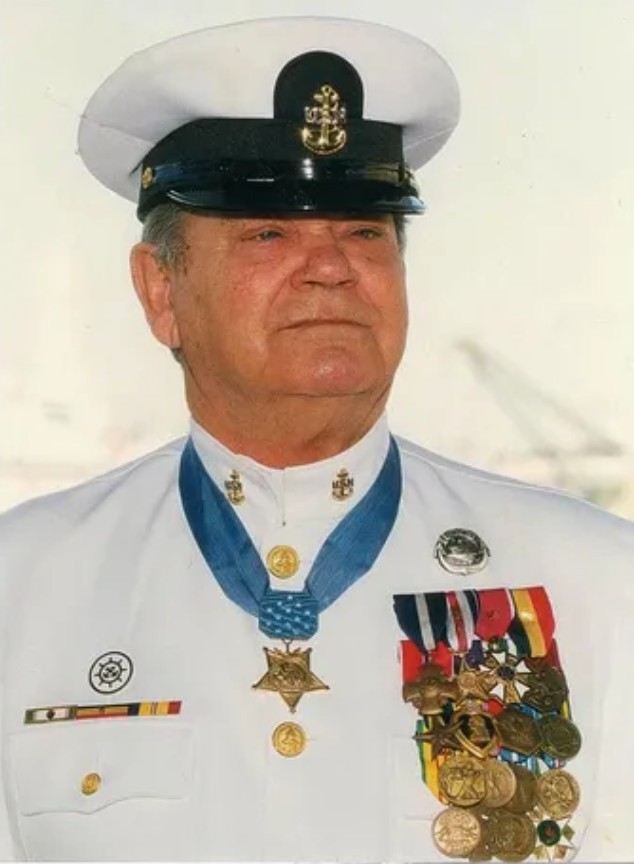 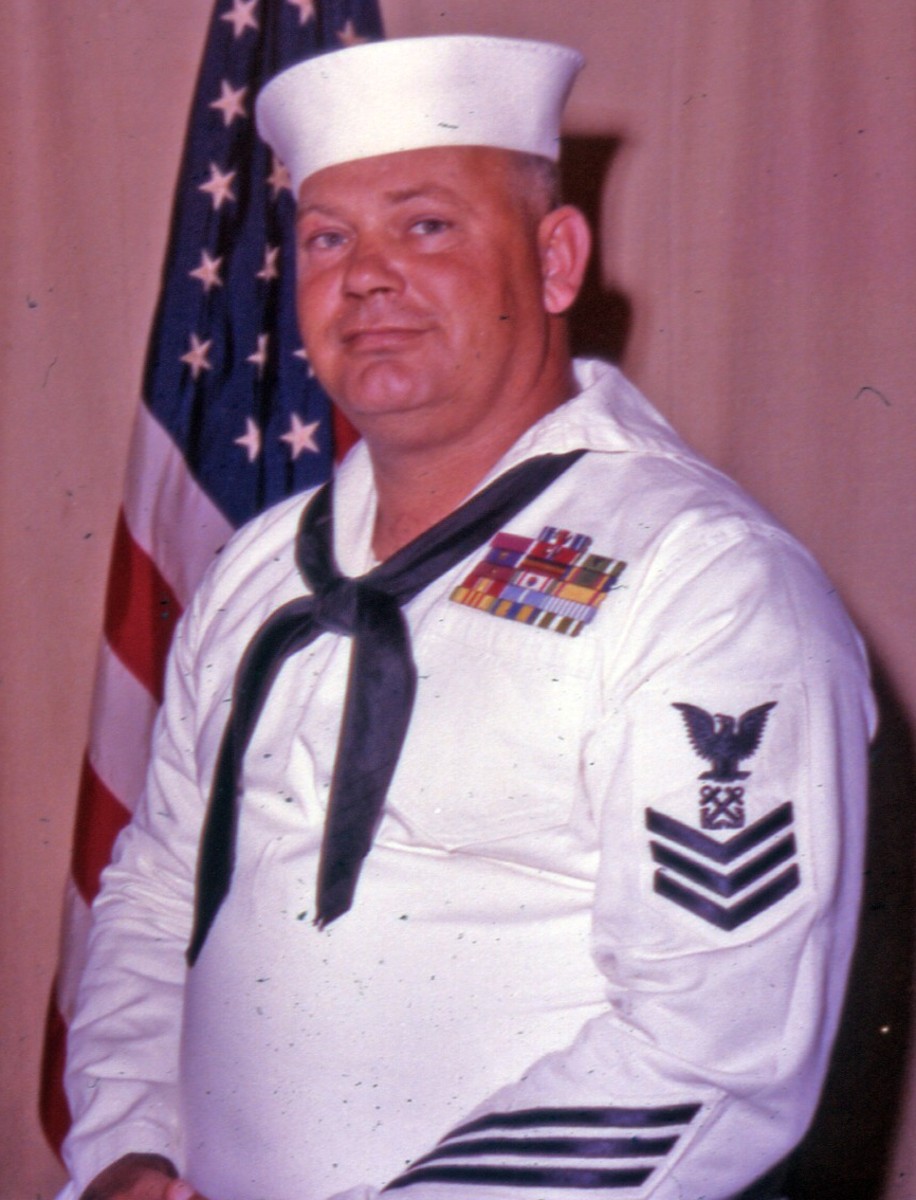
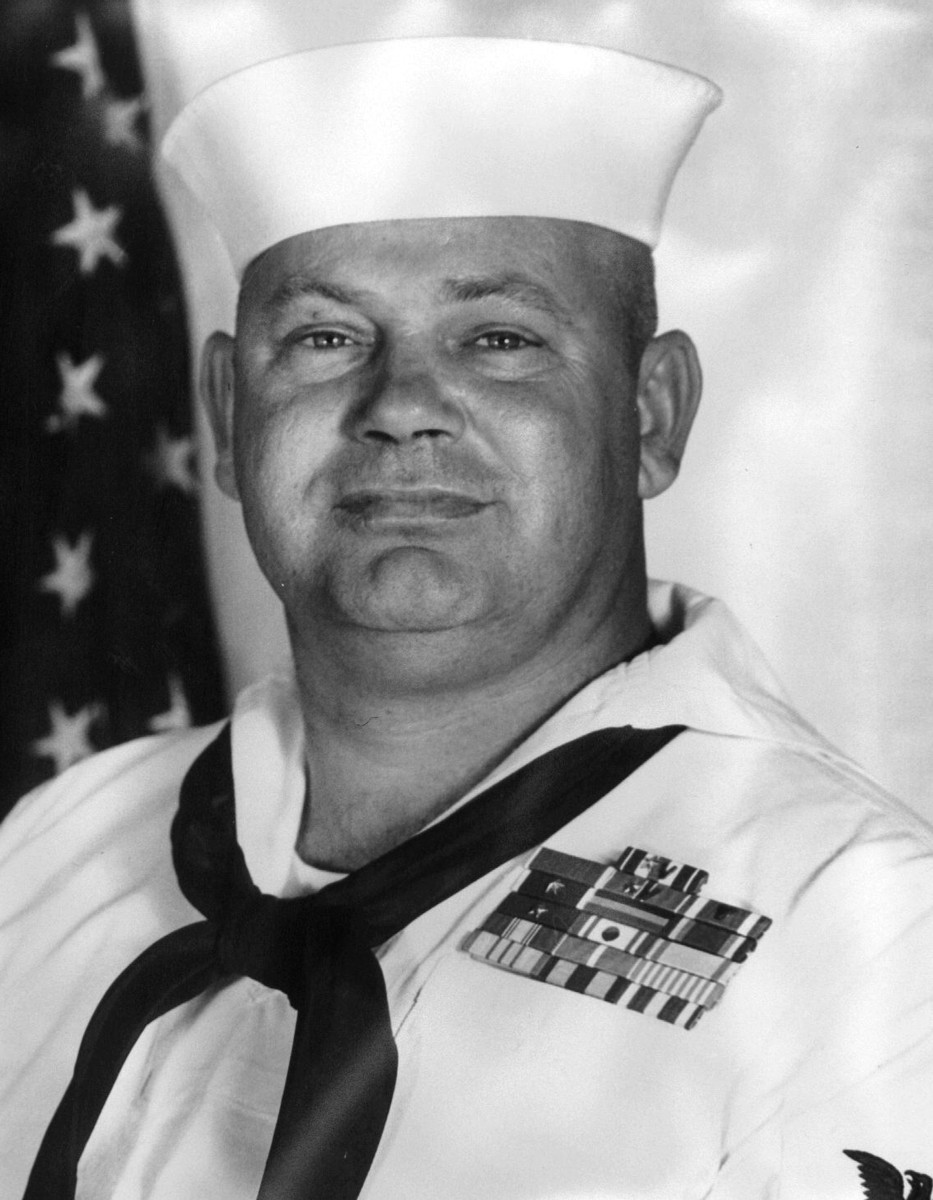 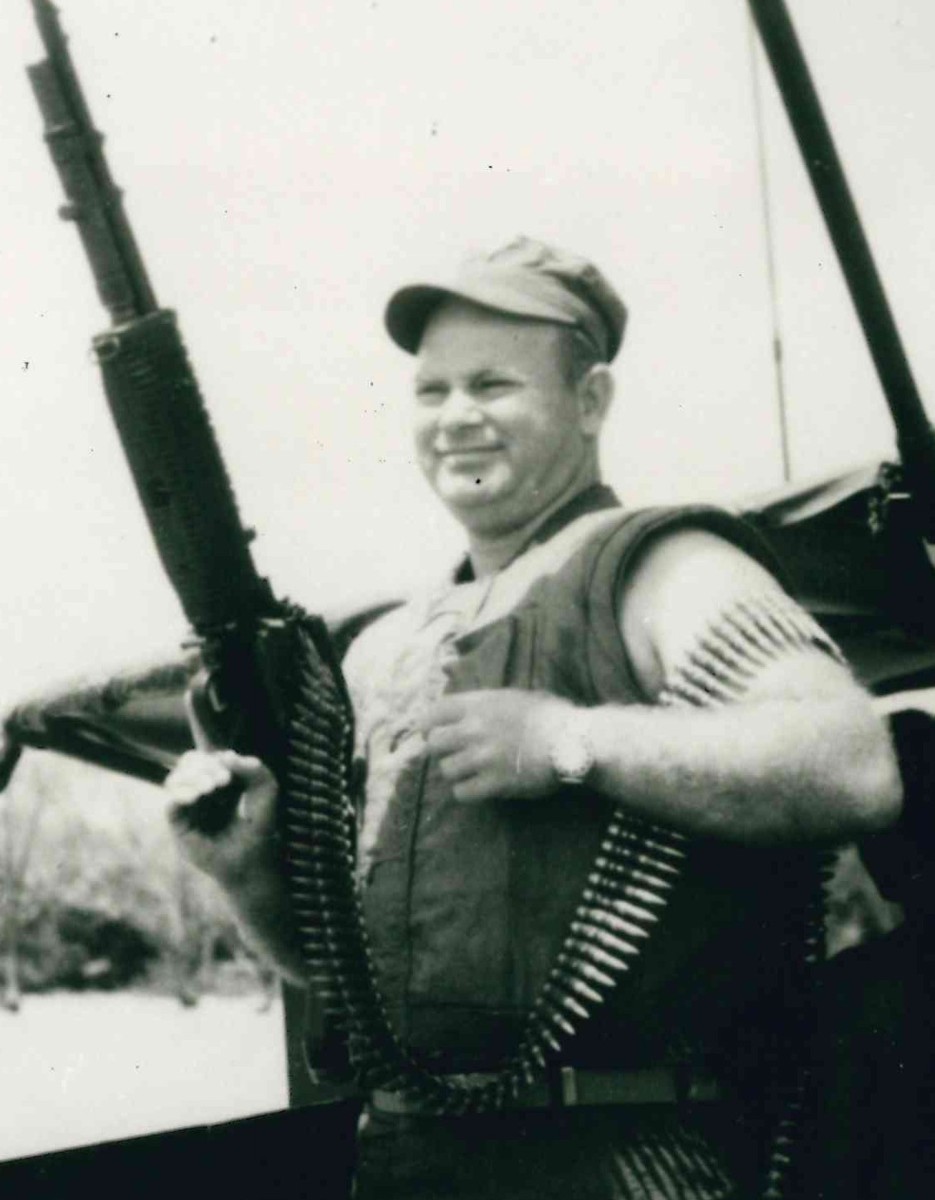 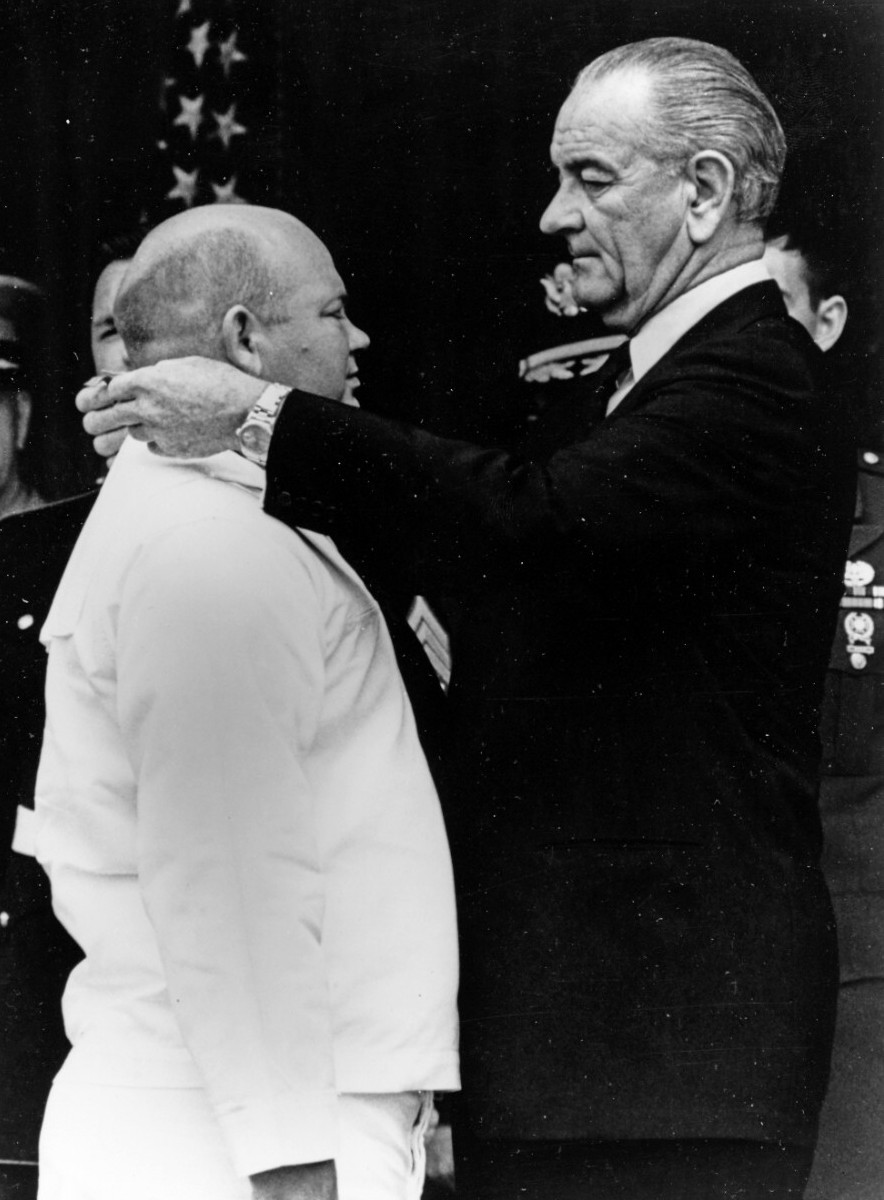 receiving the Medal of Honor from President Lyndon B. Johnson |
||
| patches + more | ||
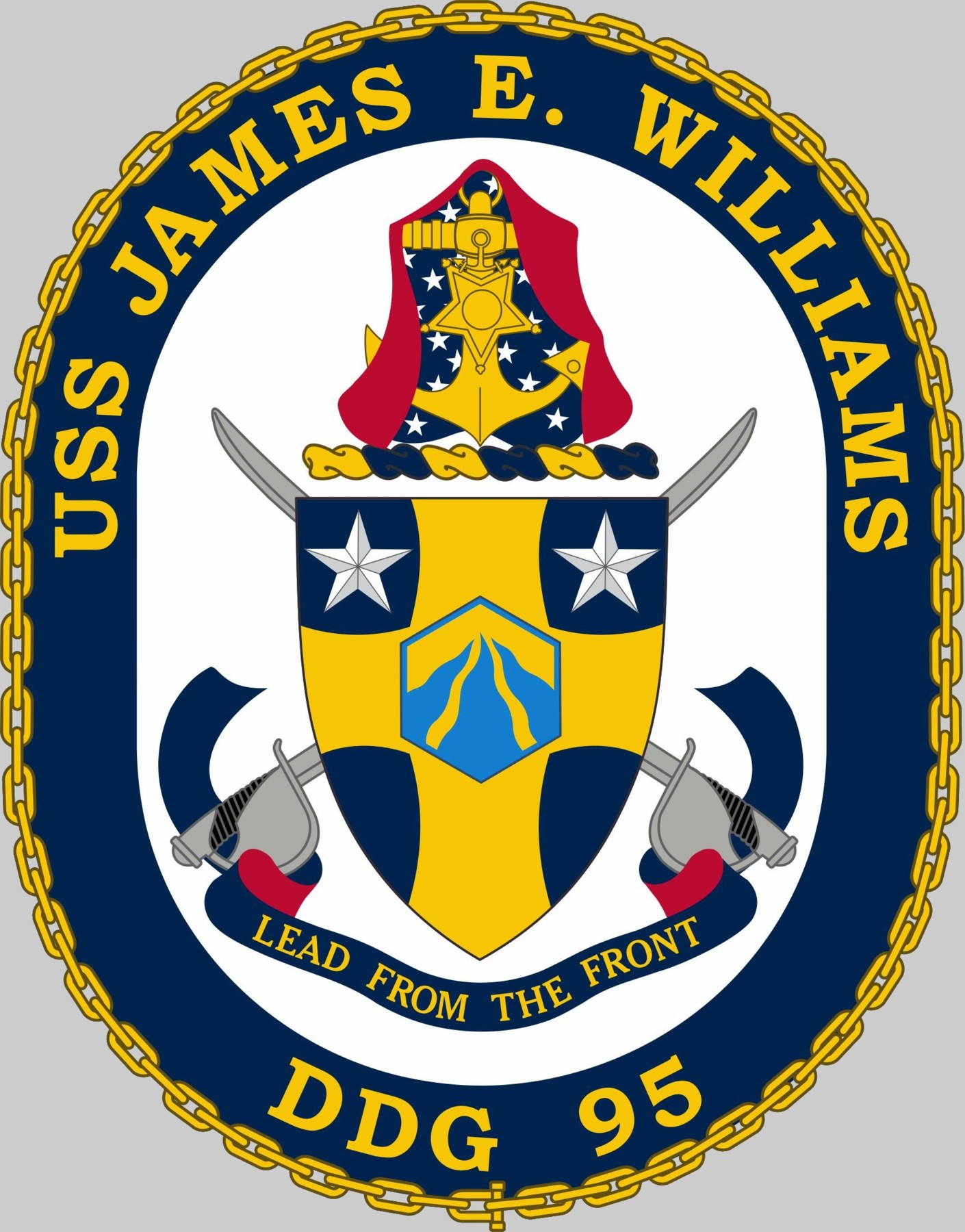   |
||
|
|
seaforces.org
|
USN ships
start page | |